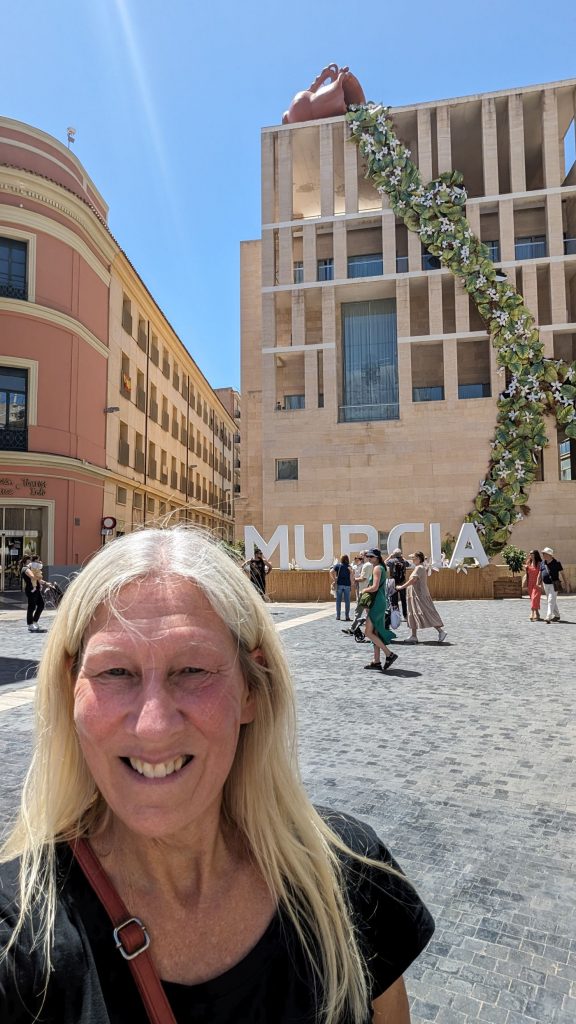This post is mostly about Murcia. But first, just a few more pictures of Cartagena and one of our new puzzles.
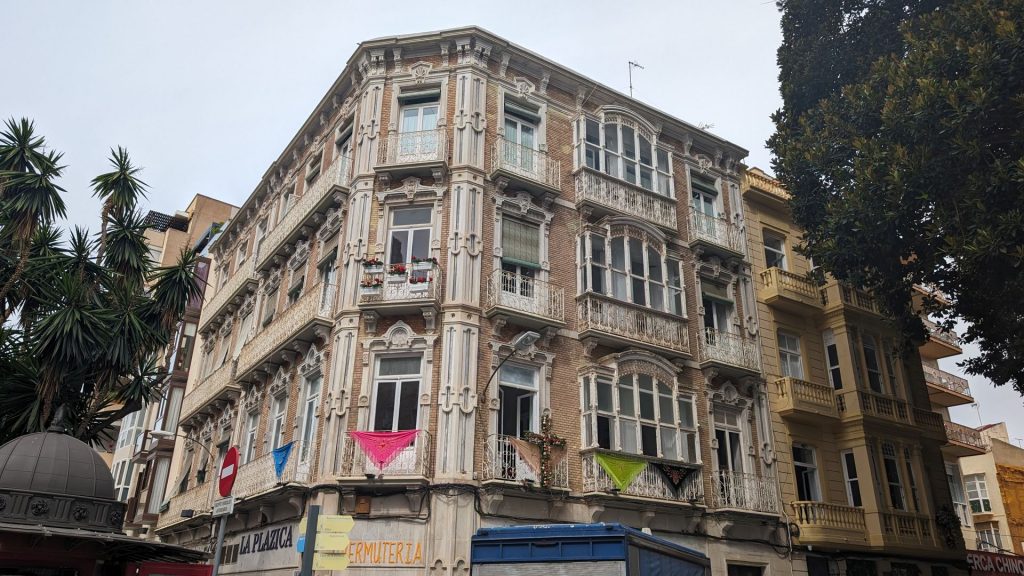
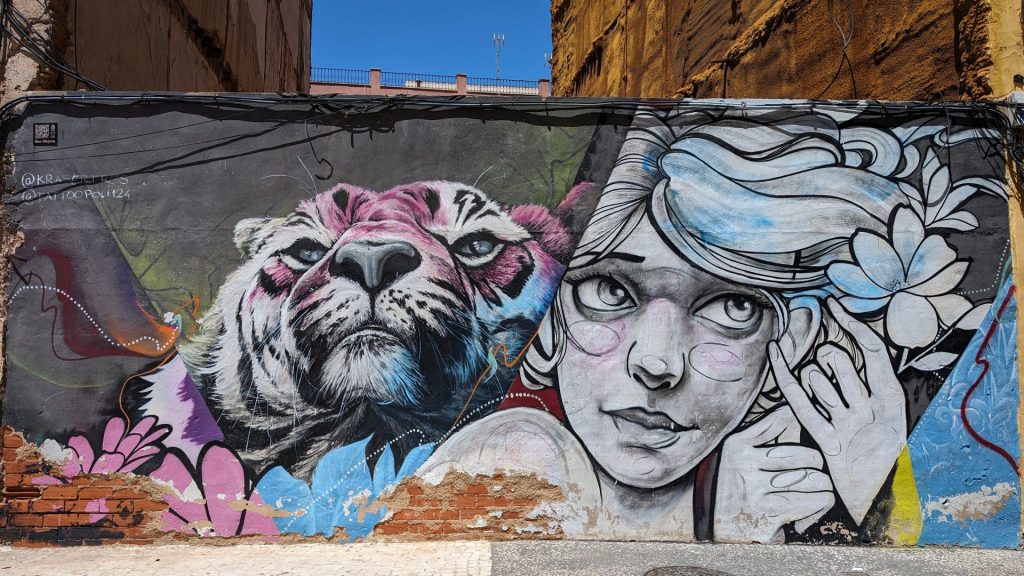
The sculpture below is called The Marine. This was Spain’s first monument to the Spanish Marine. It is made with pieces of bronze provided by the Navy. The aim is to pay tribute to the Marine Corps, one of the older units that exists in Cartagena. As you can see, it resides across the street from the Arsenal.
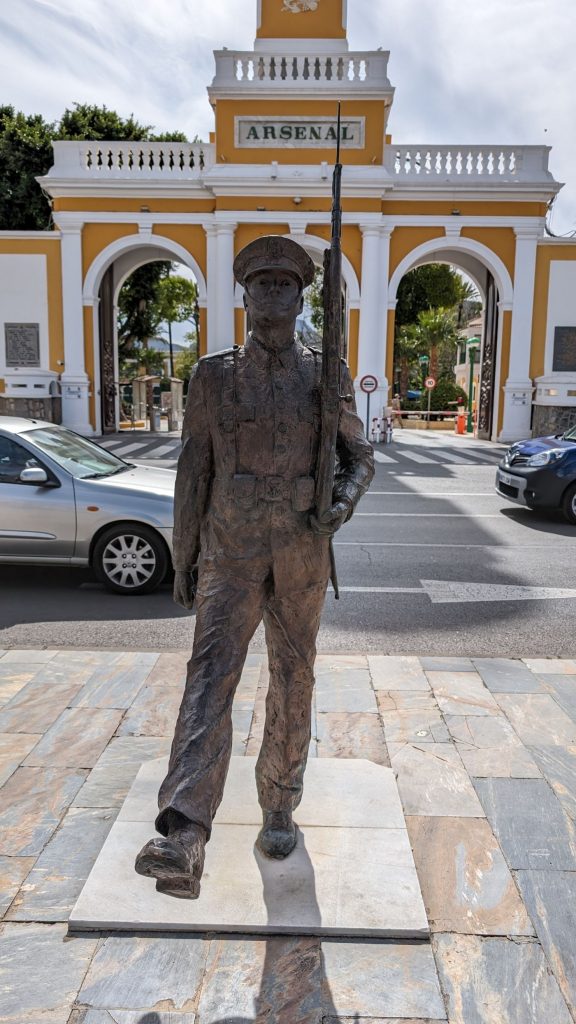
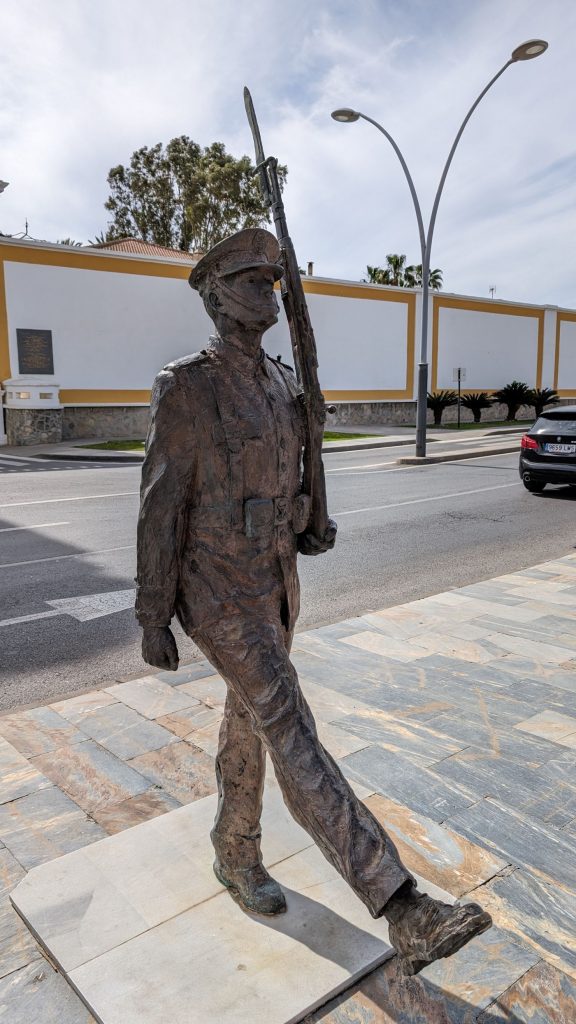
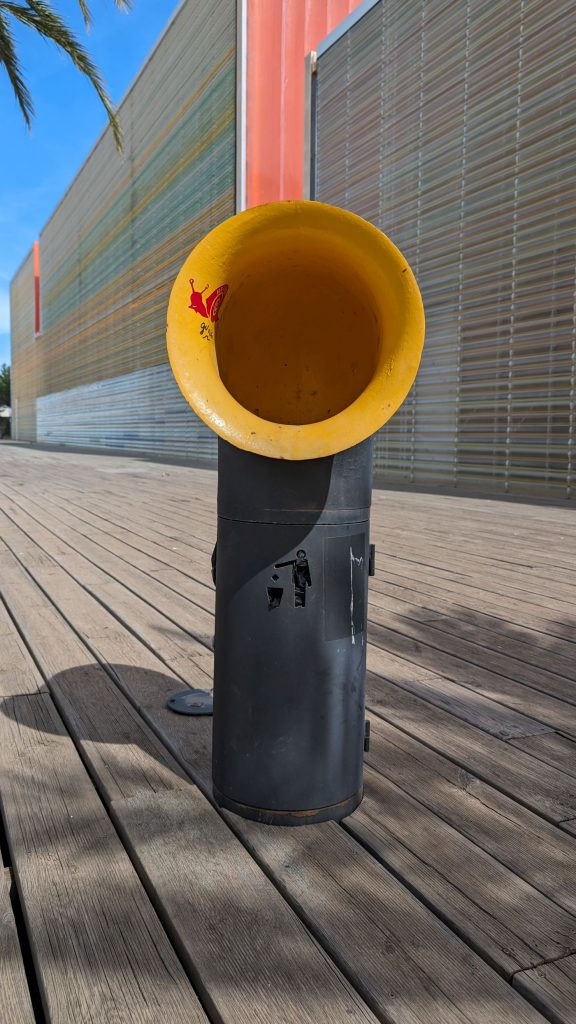

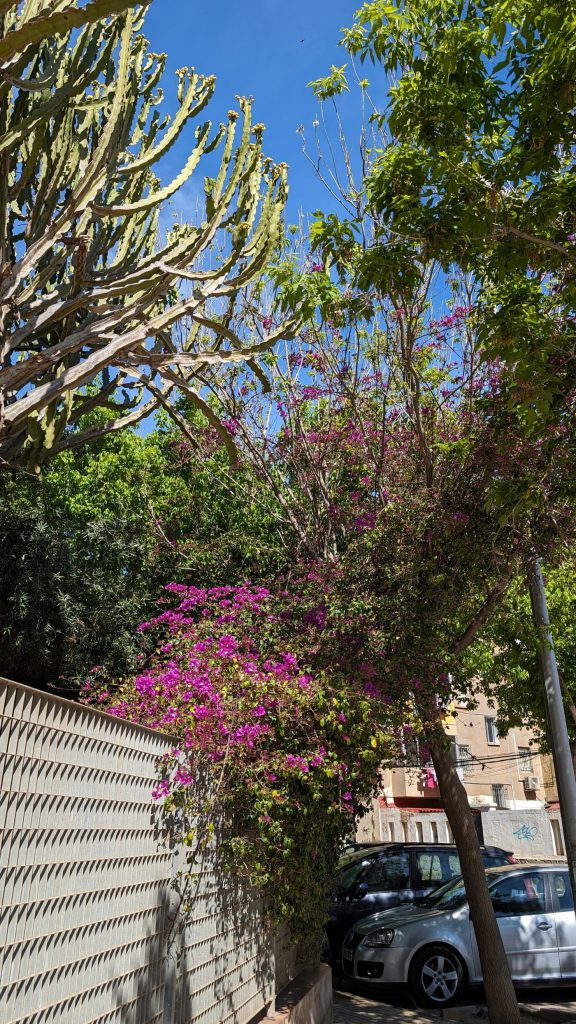
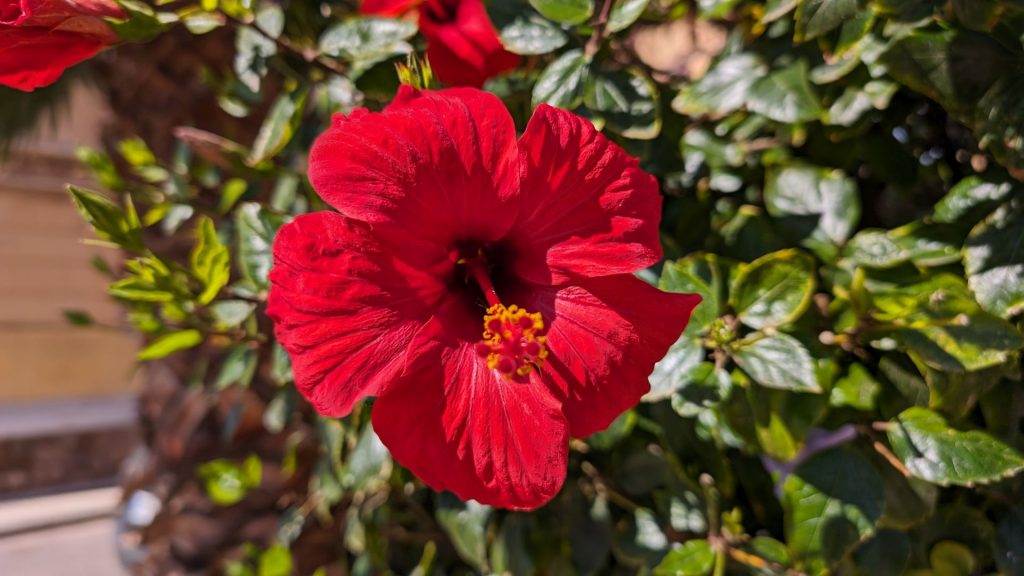
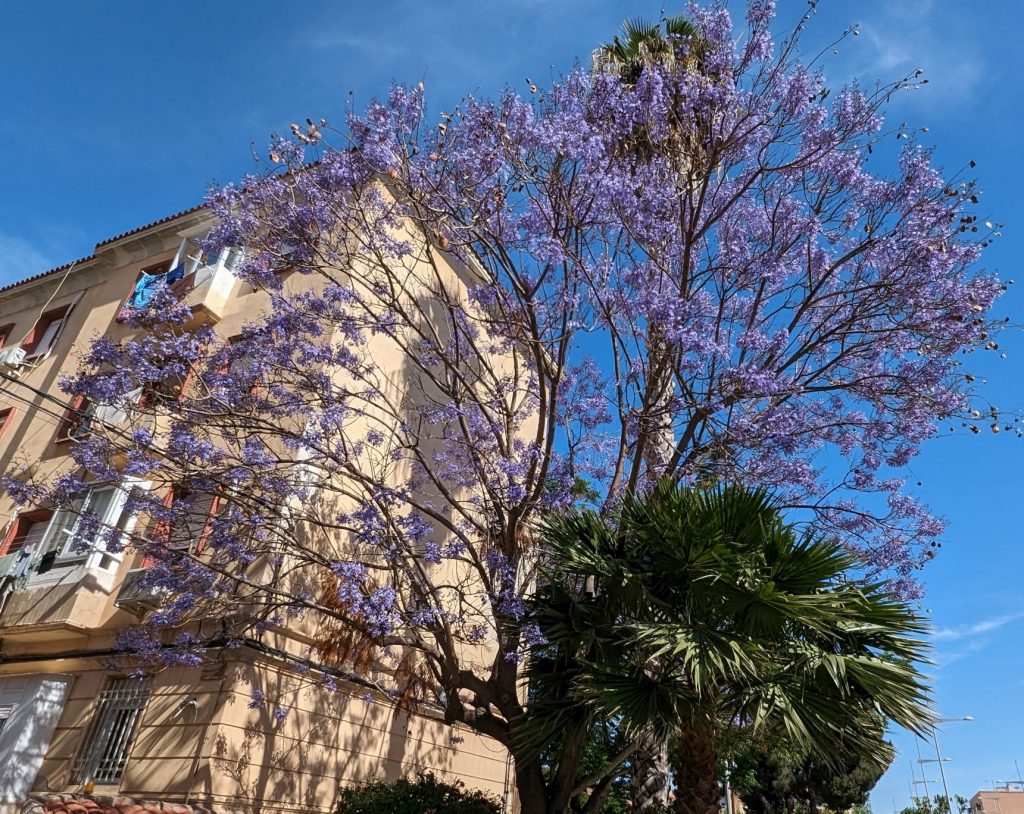
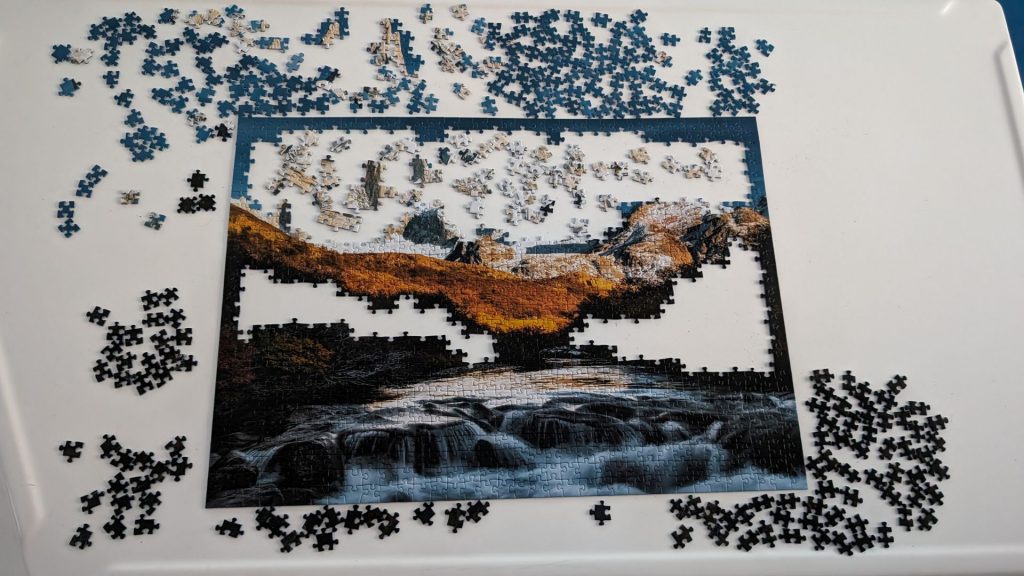
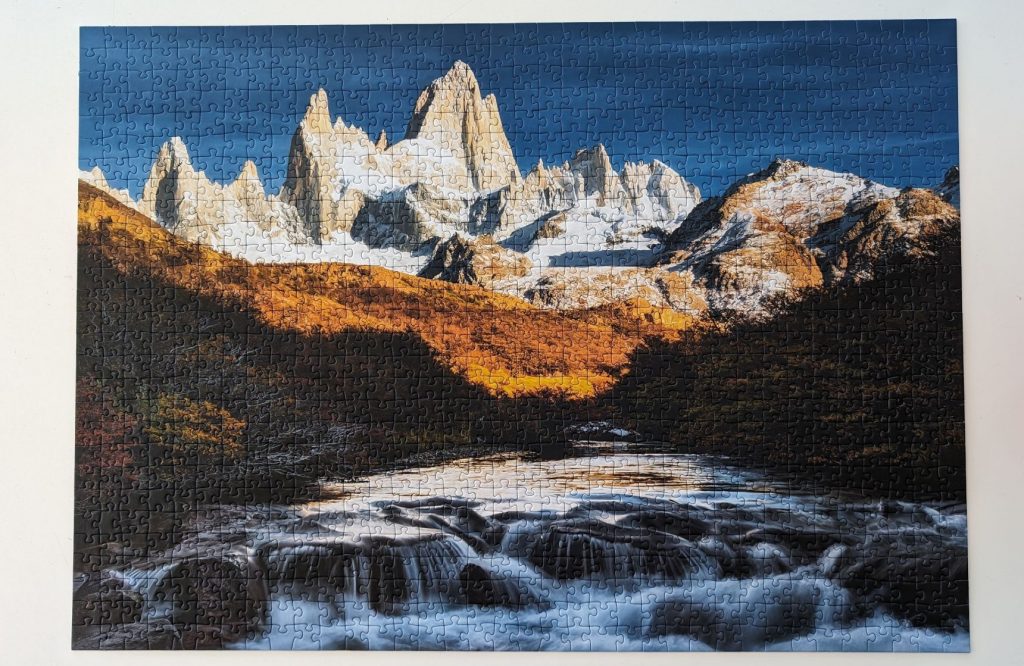
The picture on the right is street art. The picture on the left is . . . a tomato! I’d noticed that it had started to rot. I had other tomatoes I could use, so I just kept this one to, you know, watch it rot. I thought it was rather artistic. When I posted it on my Facebook page, one of my friends told me she was worried about me and suggested that I had spent too much time on the boat. Another friend agreed that she had a point. 

I threw out the tomato after this picture was taken. Michael was afraid of it. What a wimp. 
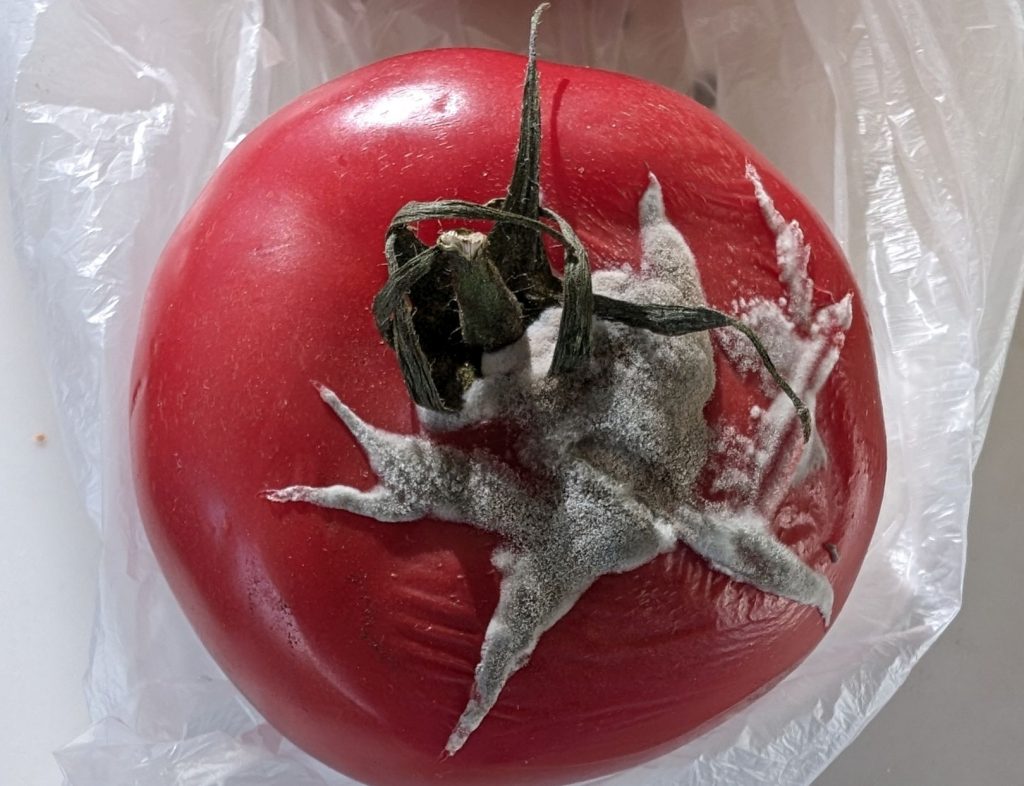
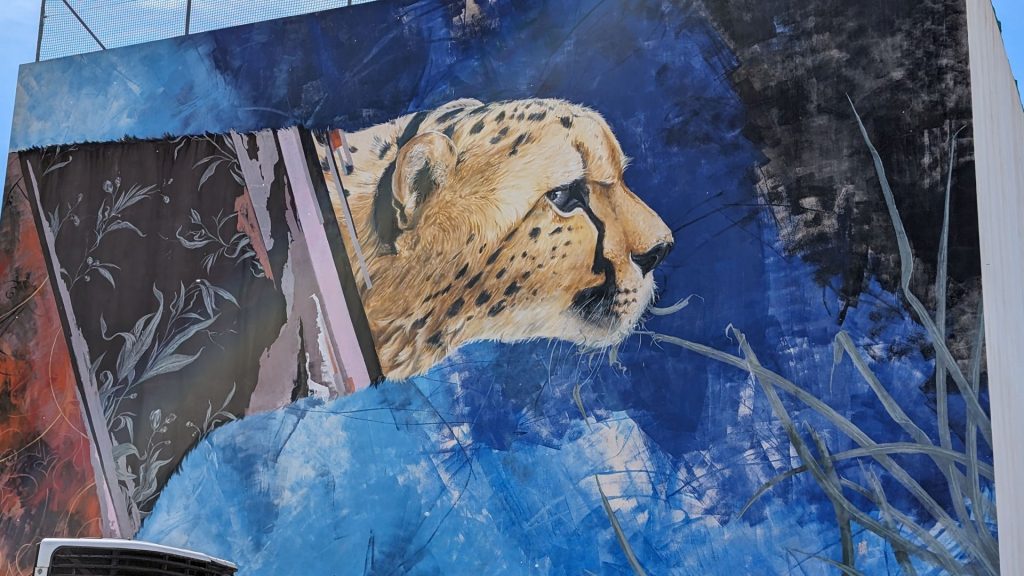
Okay, it is time to share my trip to Murcia. It happened to be Mother’s Day. (For those not from the US, the second Sunday in May is the day we honor mothers. Don’t worry, dads get their day too, on the third Sunday of June. We also have Grandparents Day, but I don’t know when it is. We like to honor all sorts of people.)
Murcia was founded in 825, but people have been living in this region since prehistory. It is the seventh largest city in Spain. It is the capital of the region of Murcia. (Cartagena is in the region of Murcia.) Most importantly, it is a lovely city to visit!
I started by walking from the bus station to the university aquarium. The aquarium wasn’t big, but the fish were beautiful.
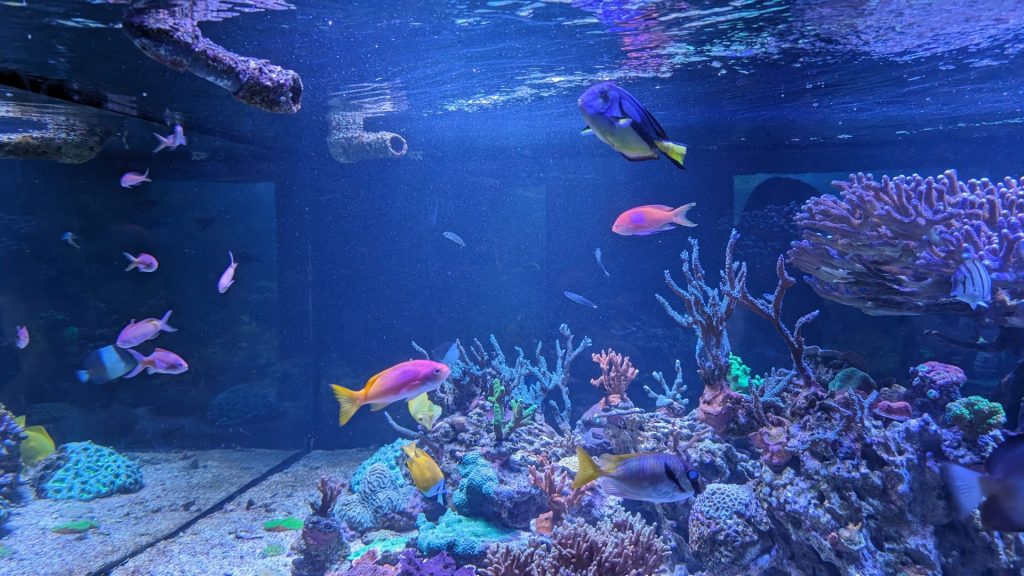
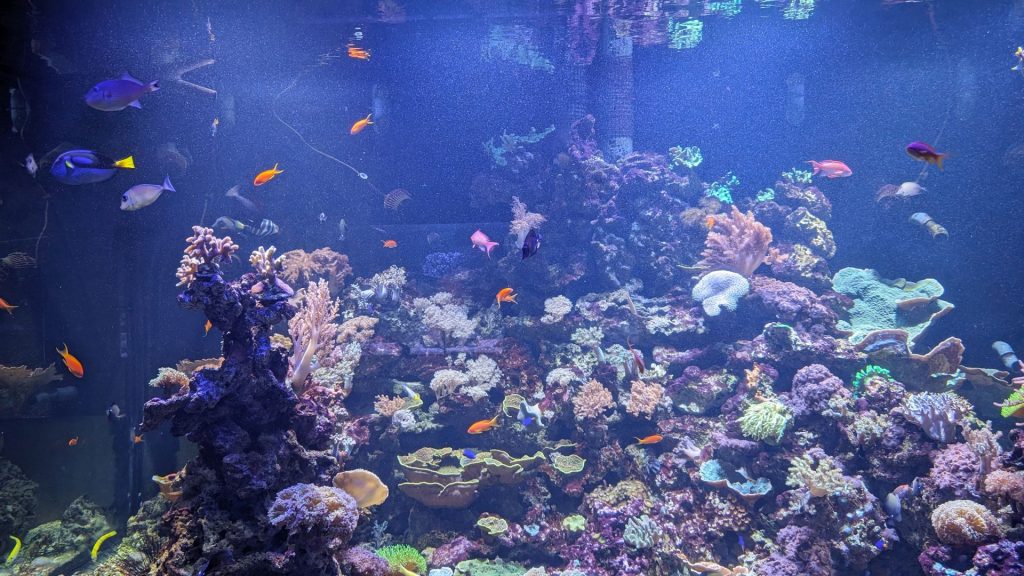
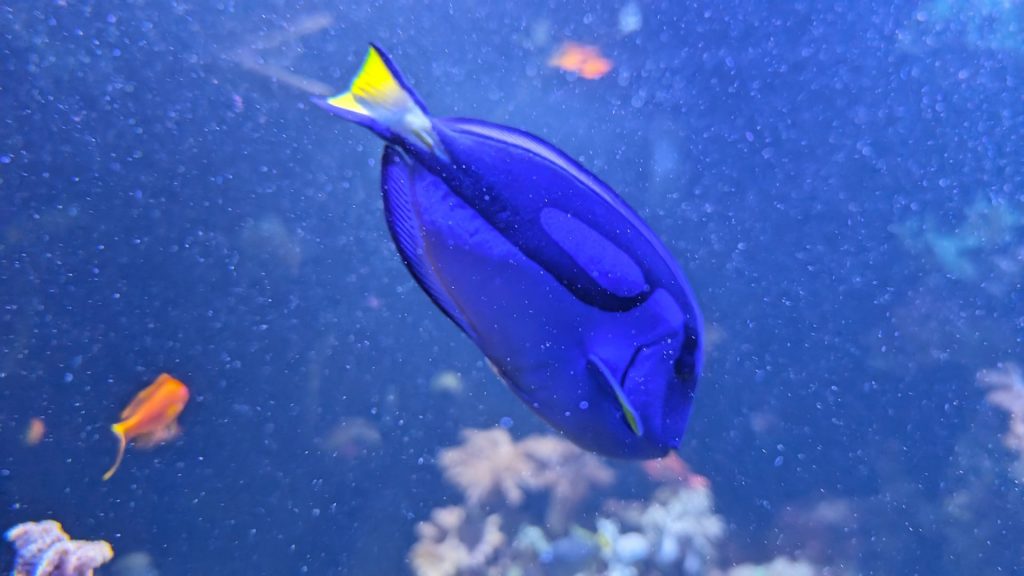
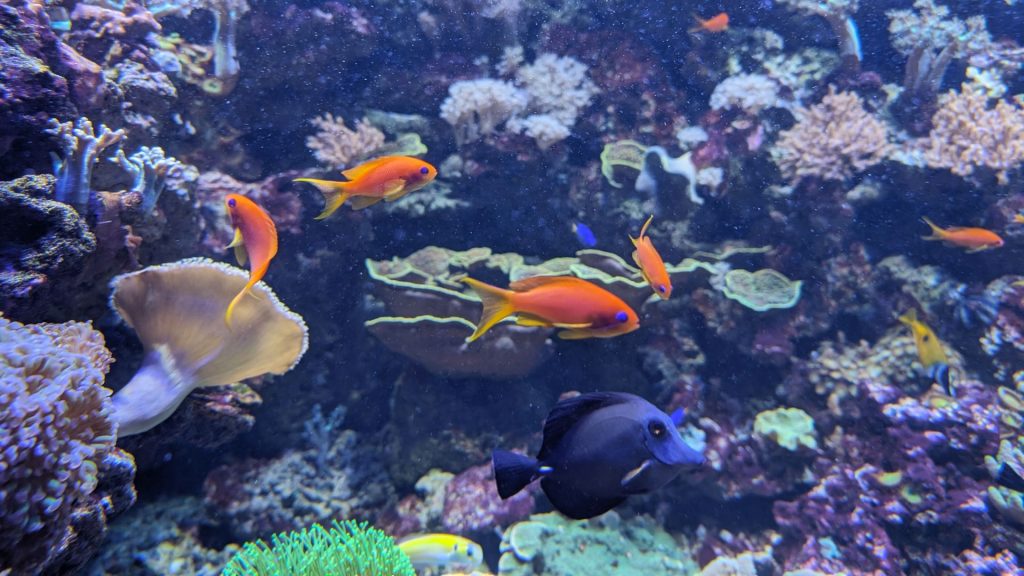
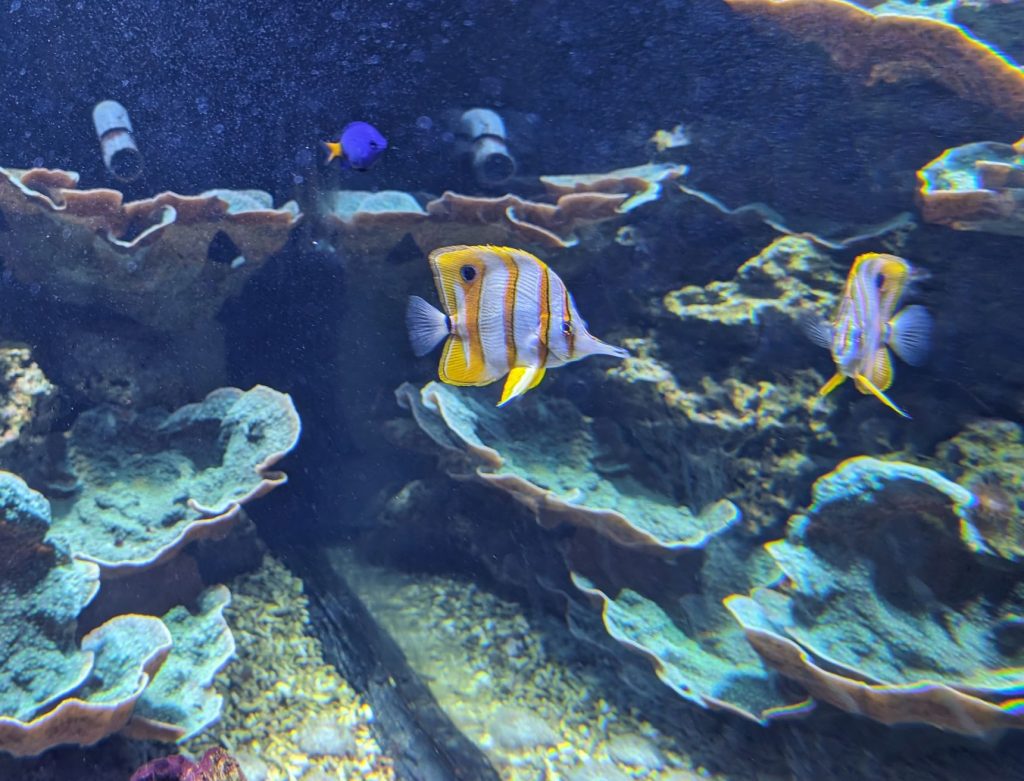
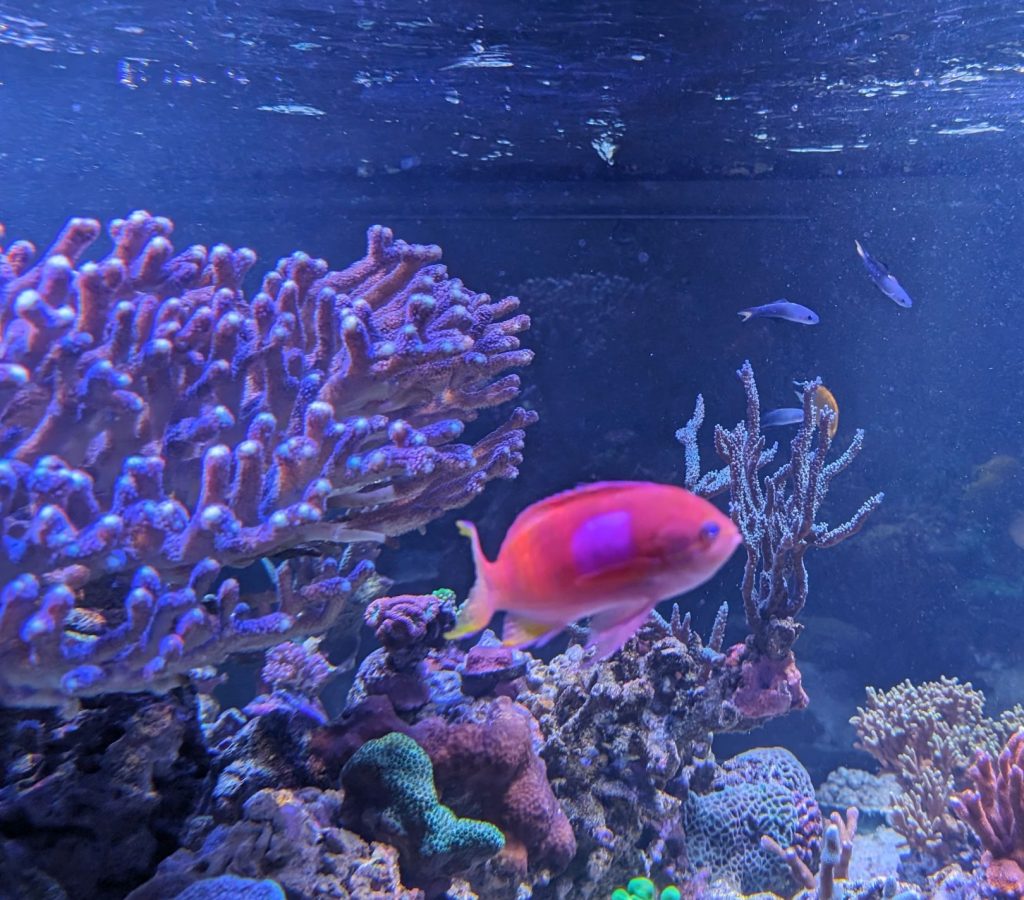
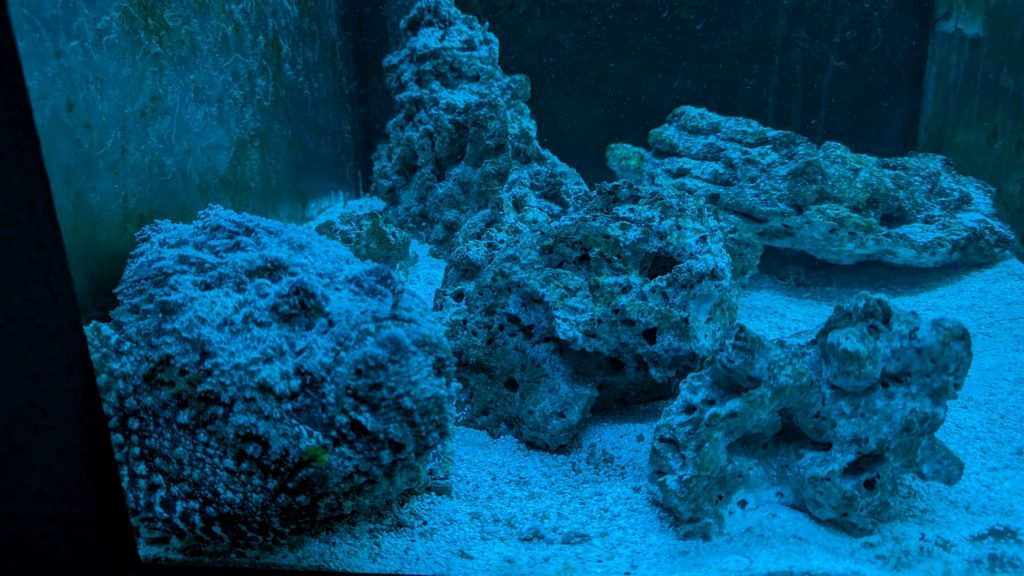
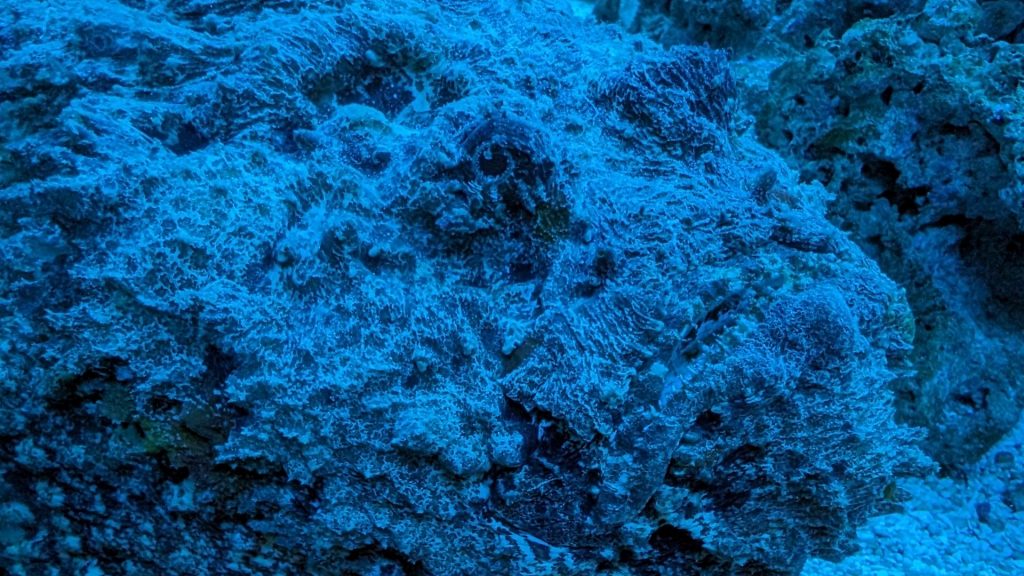
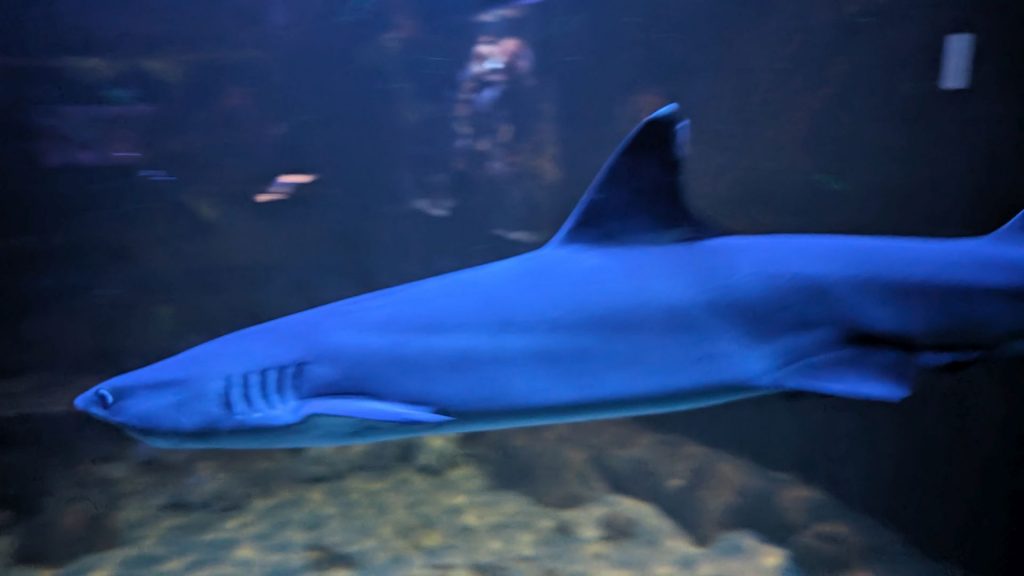
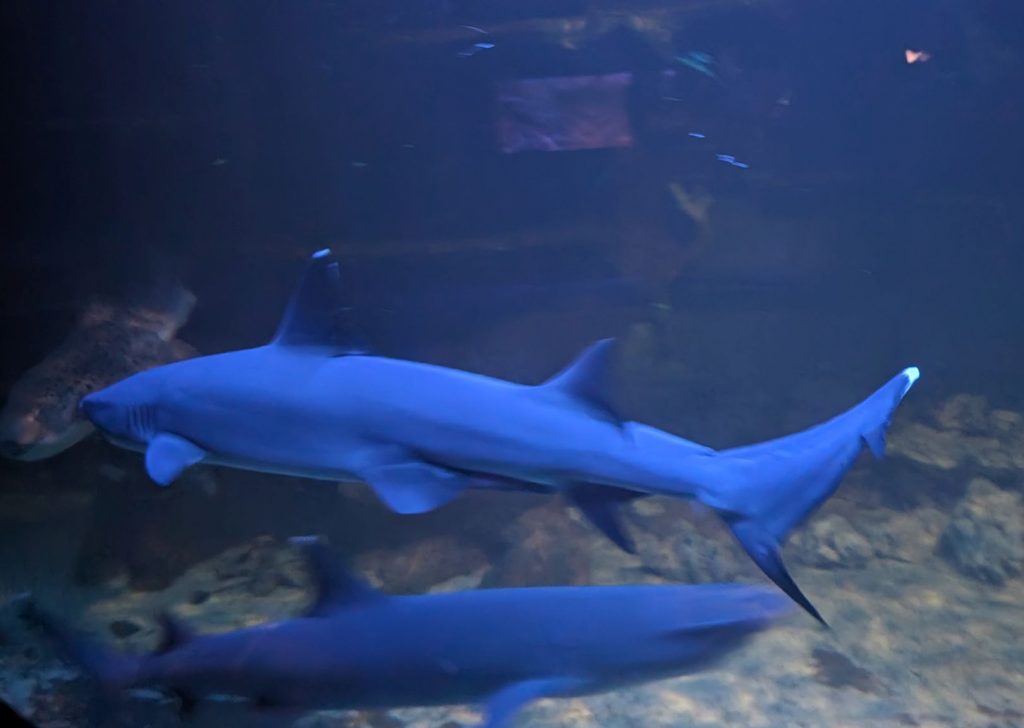
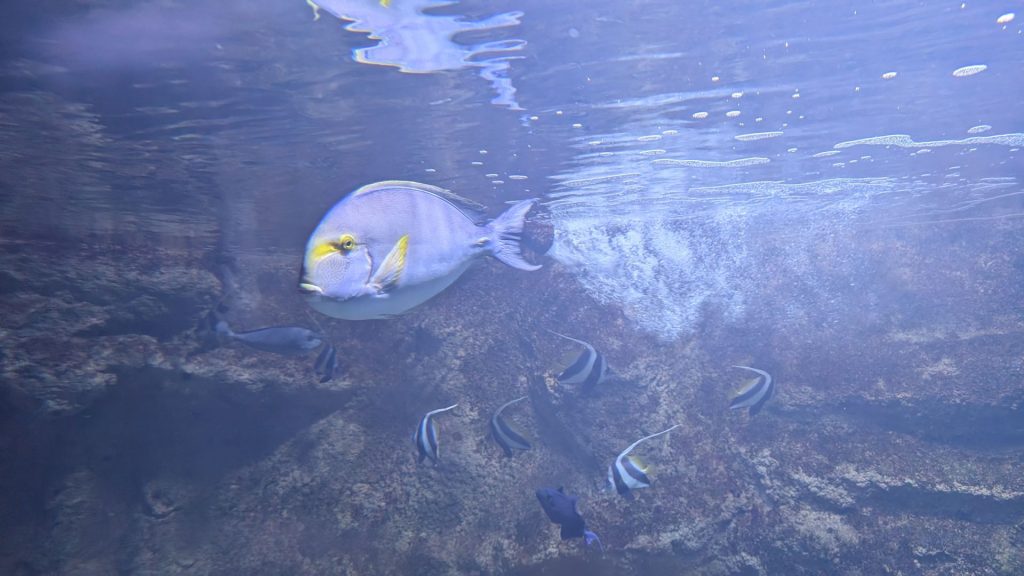
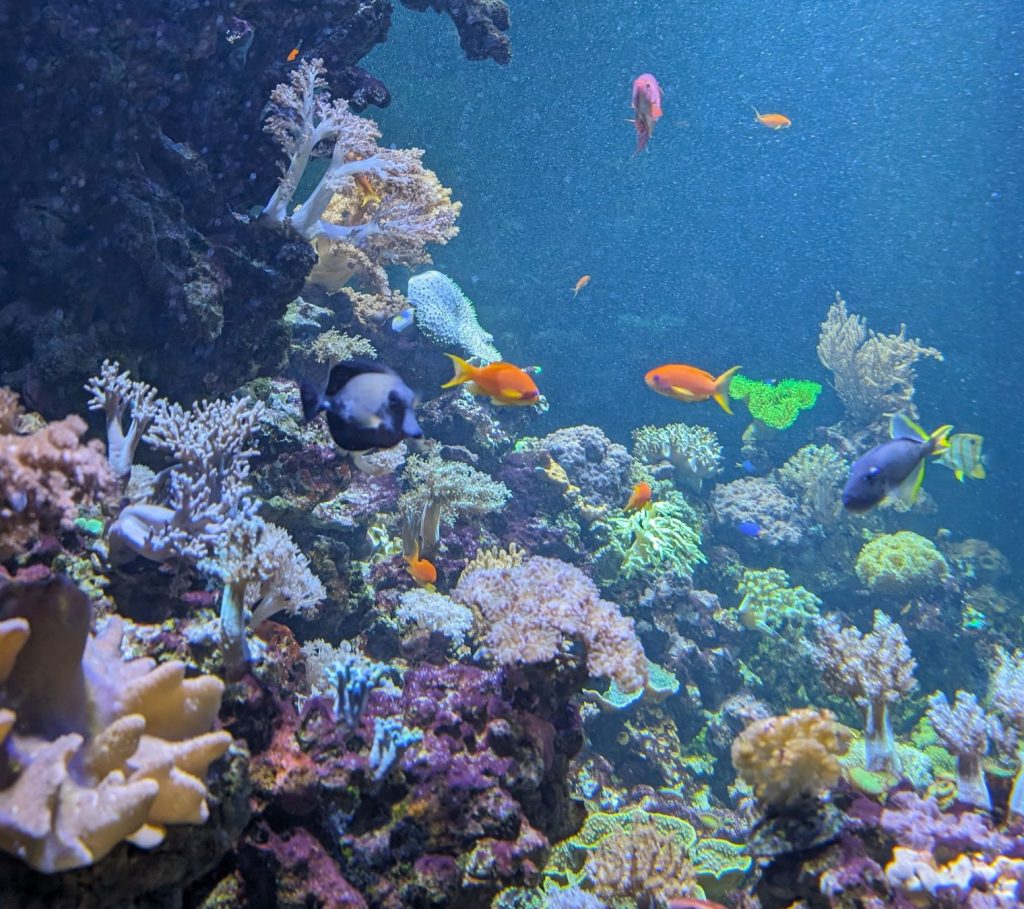
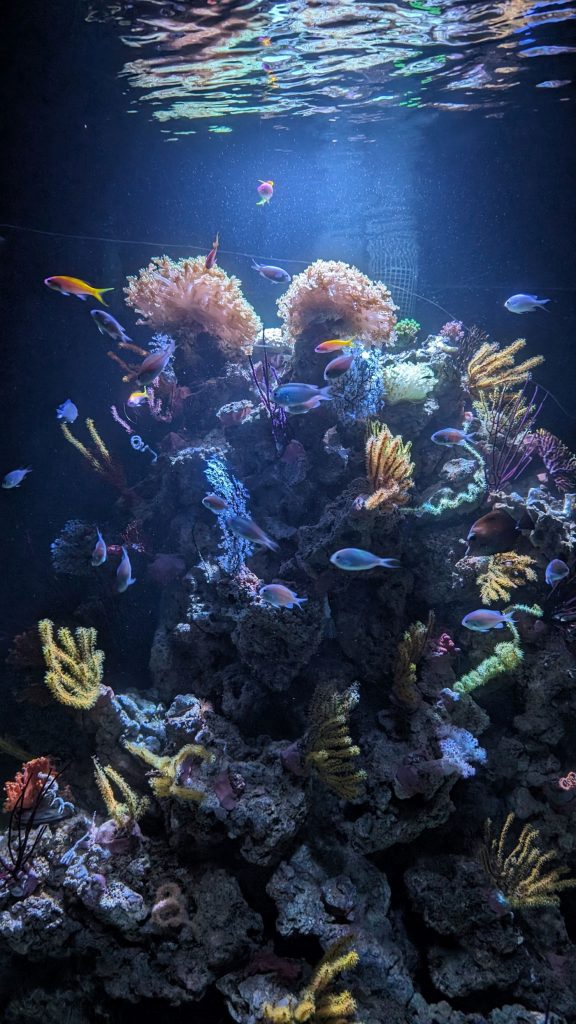
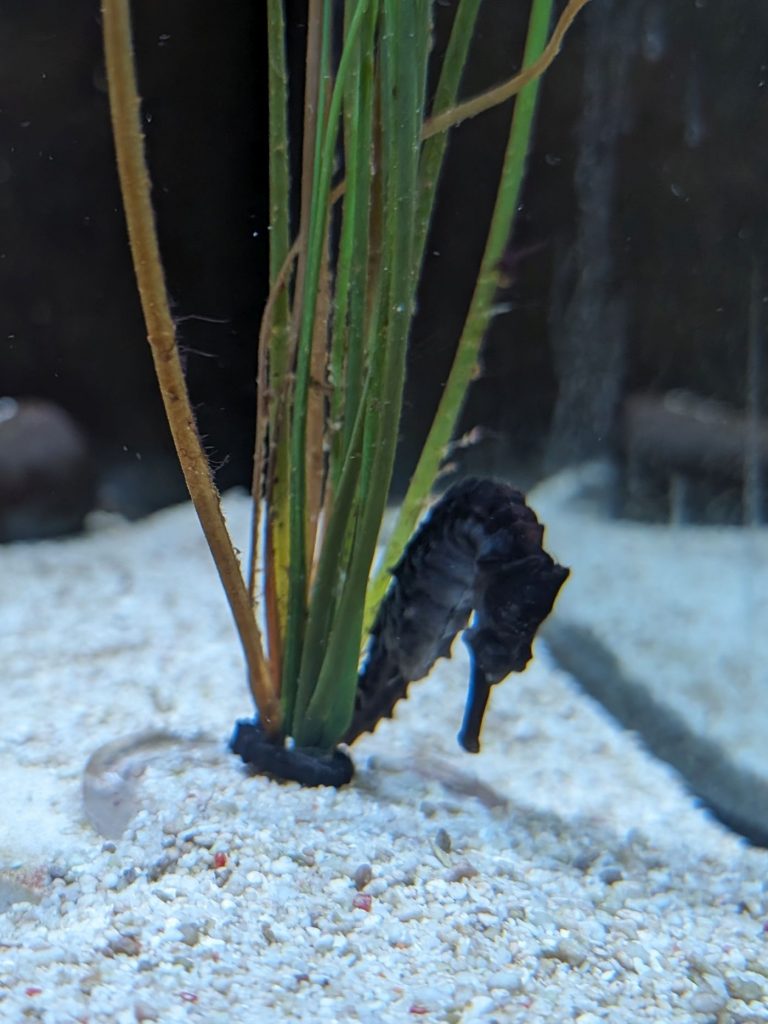
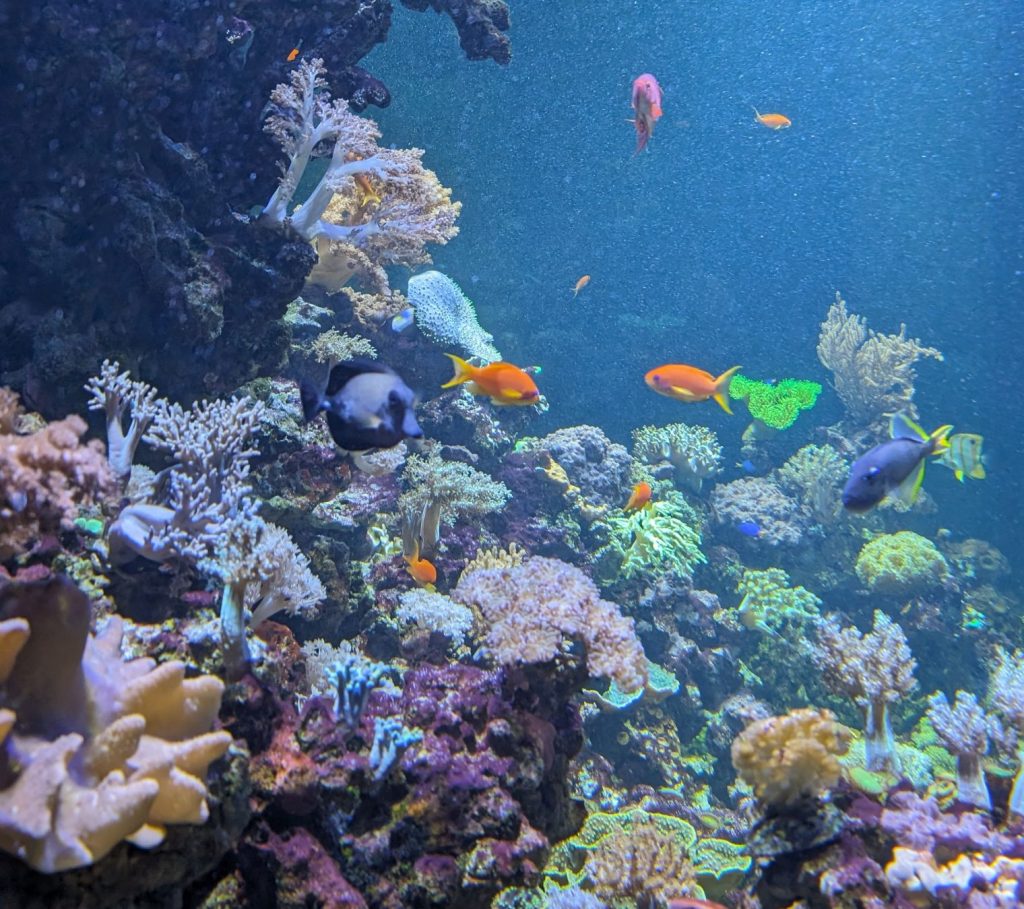
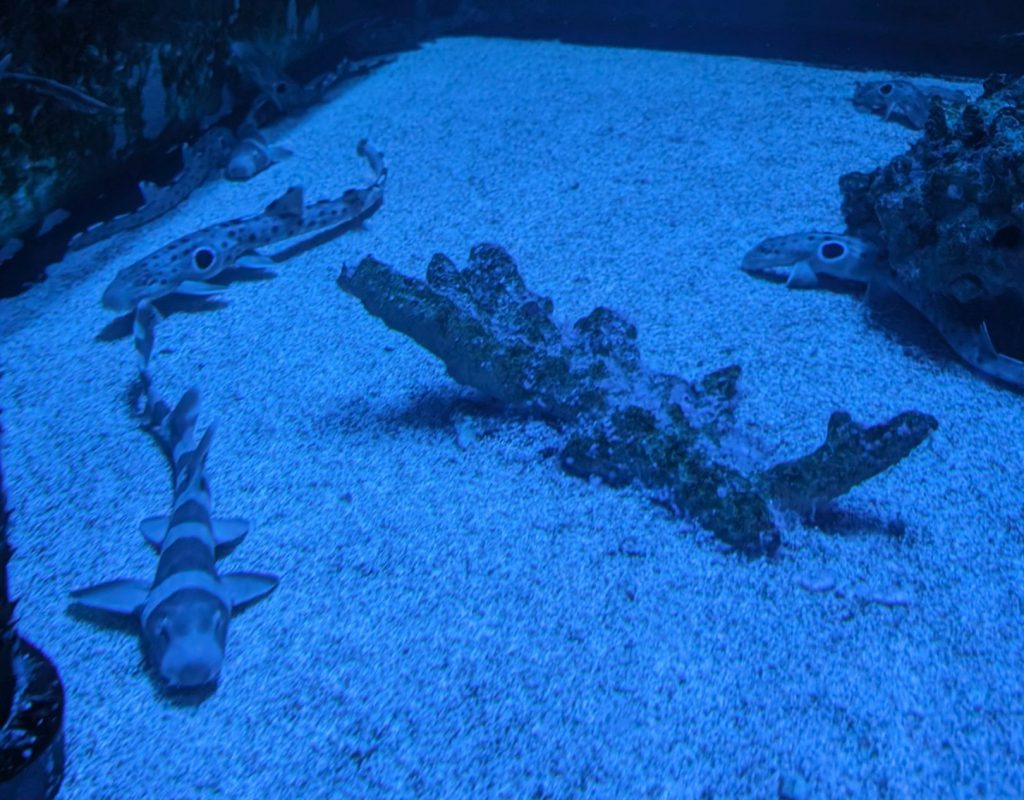
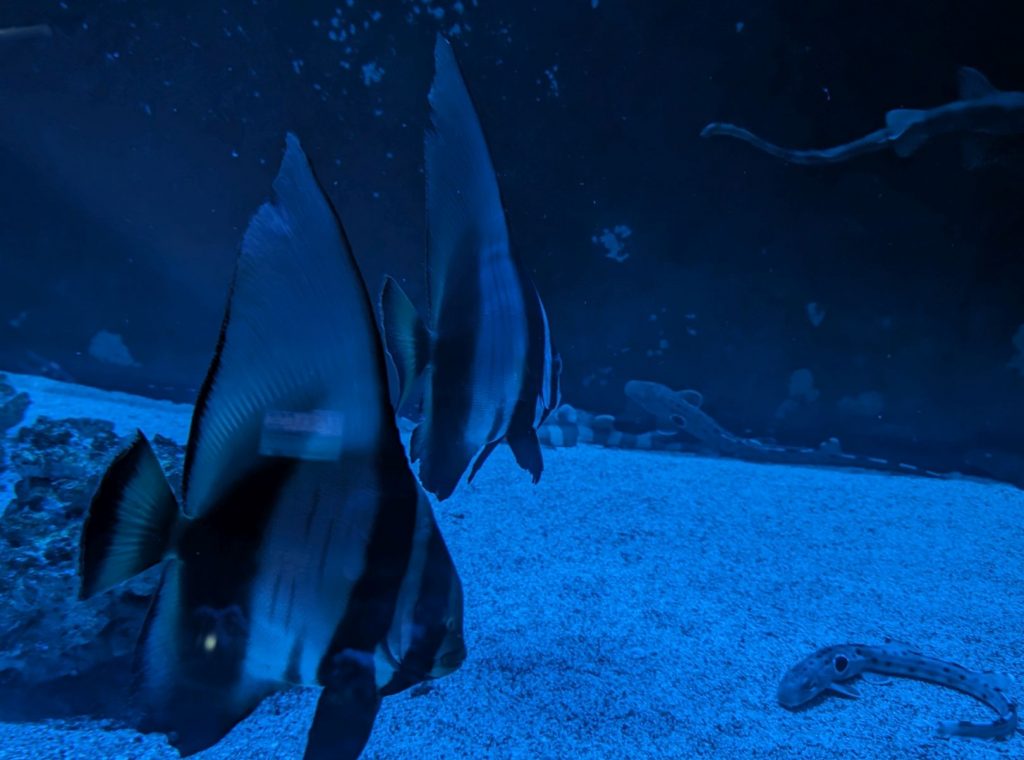
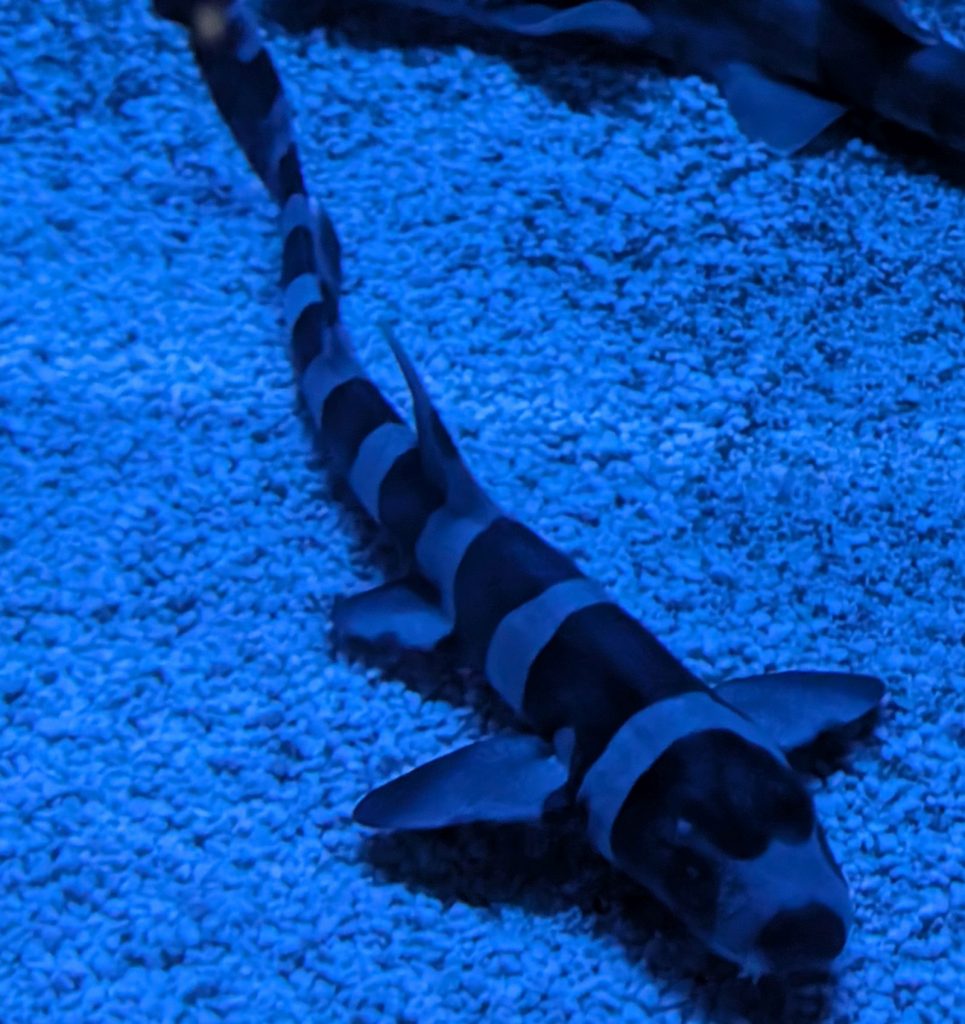
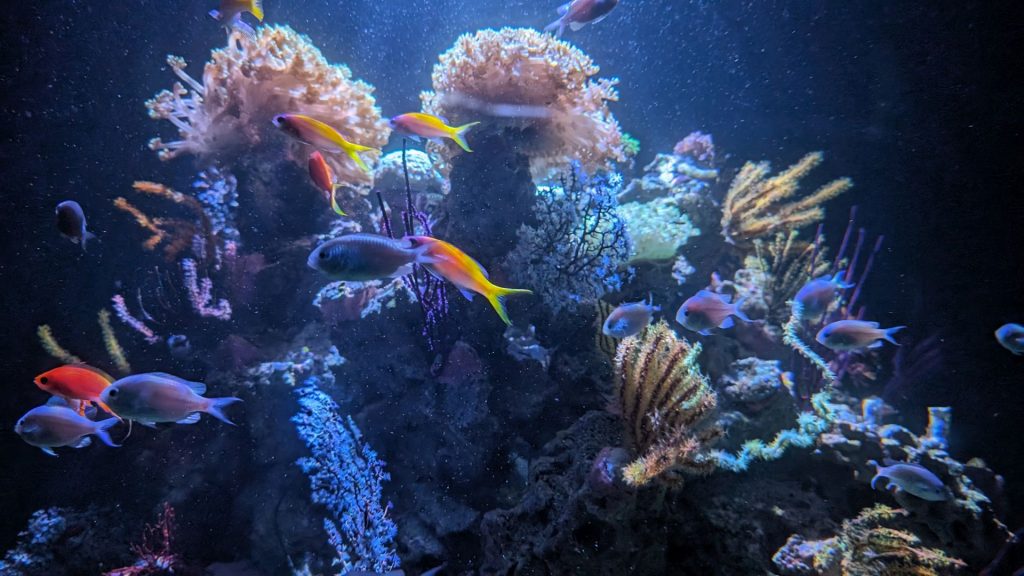
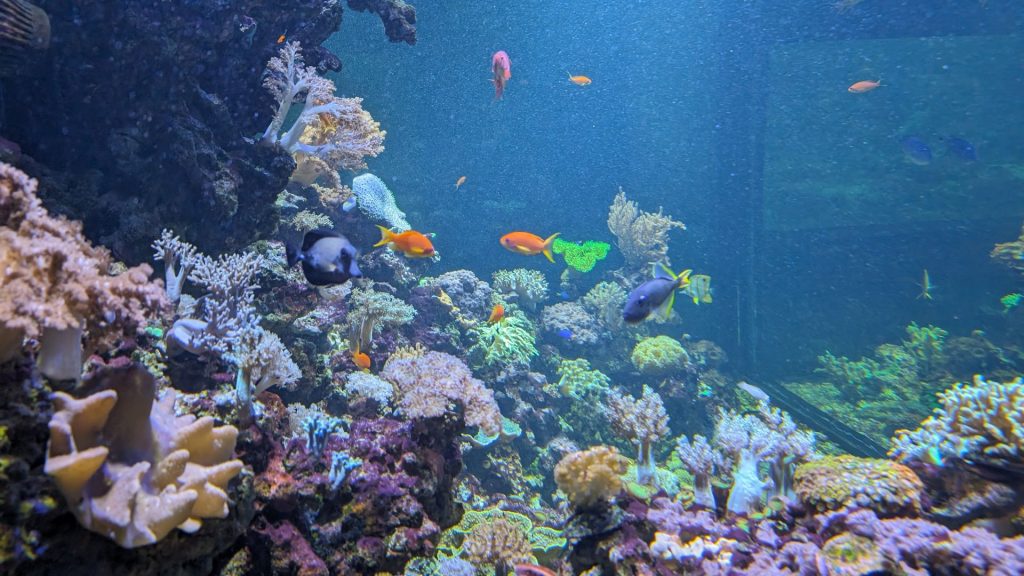
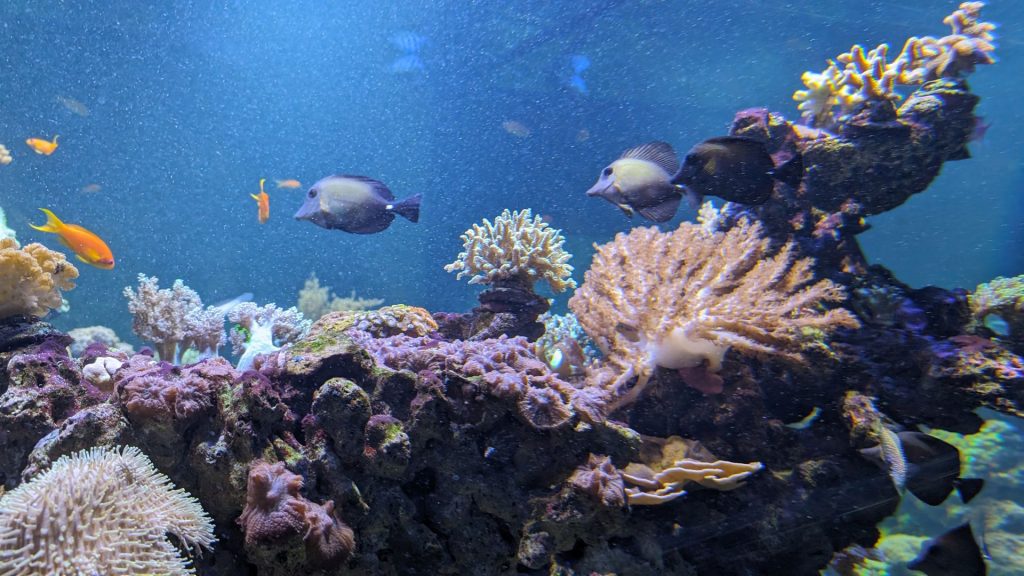
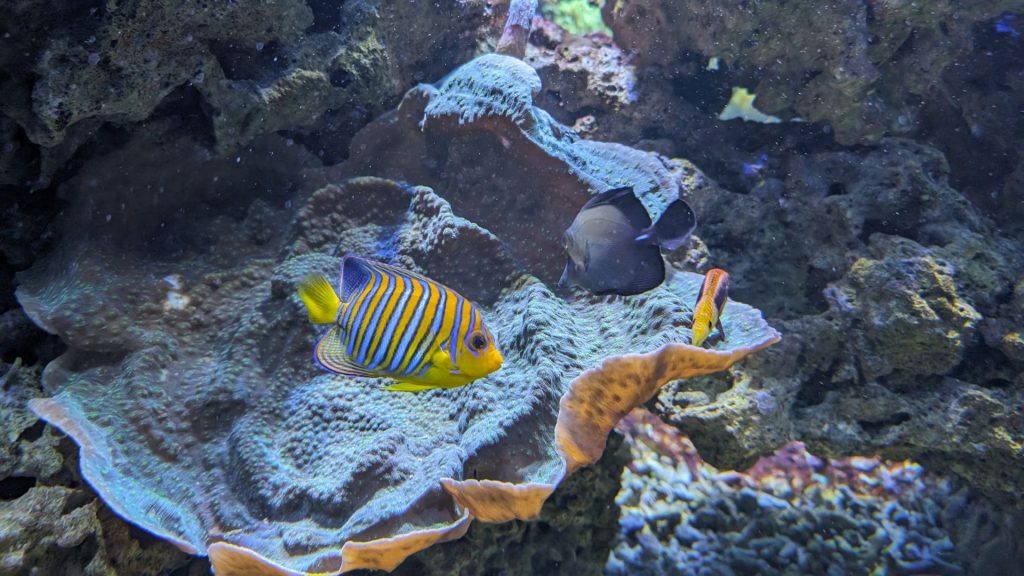
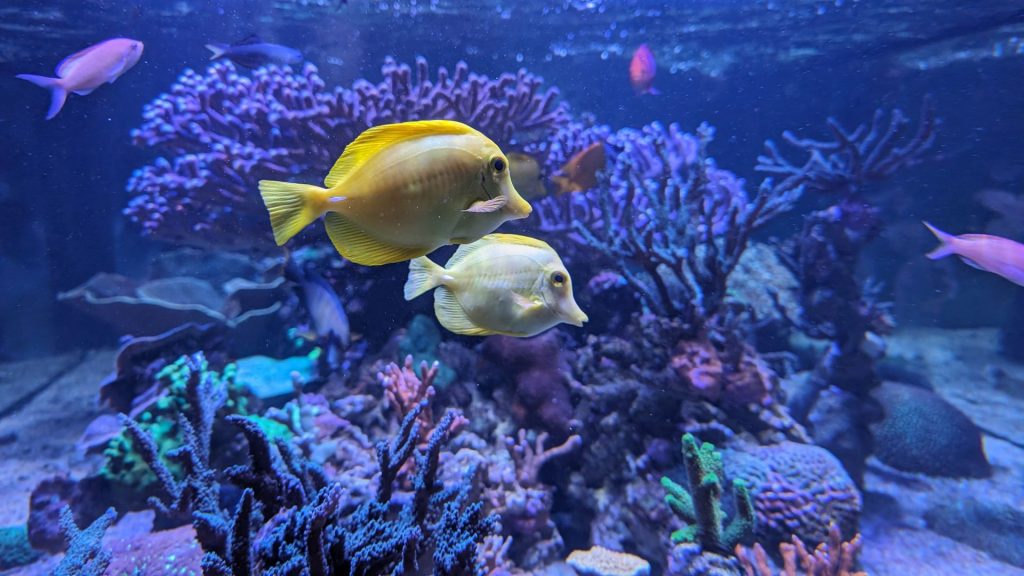
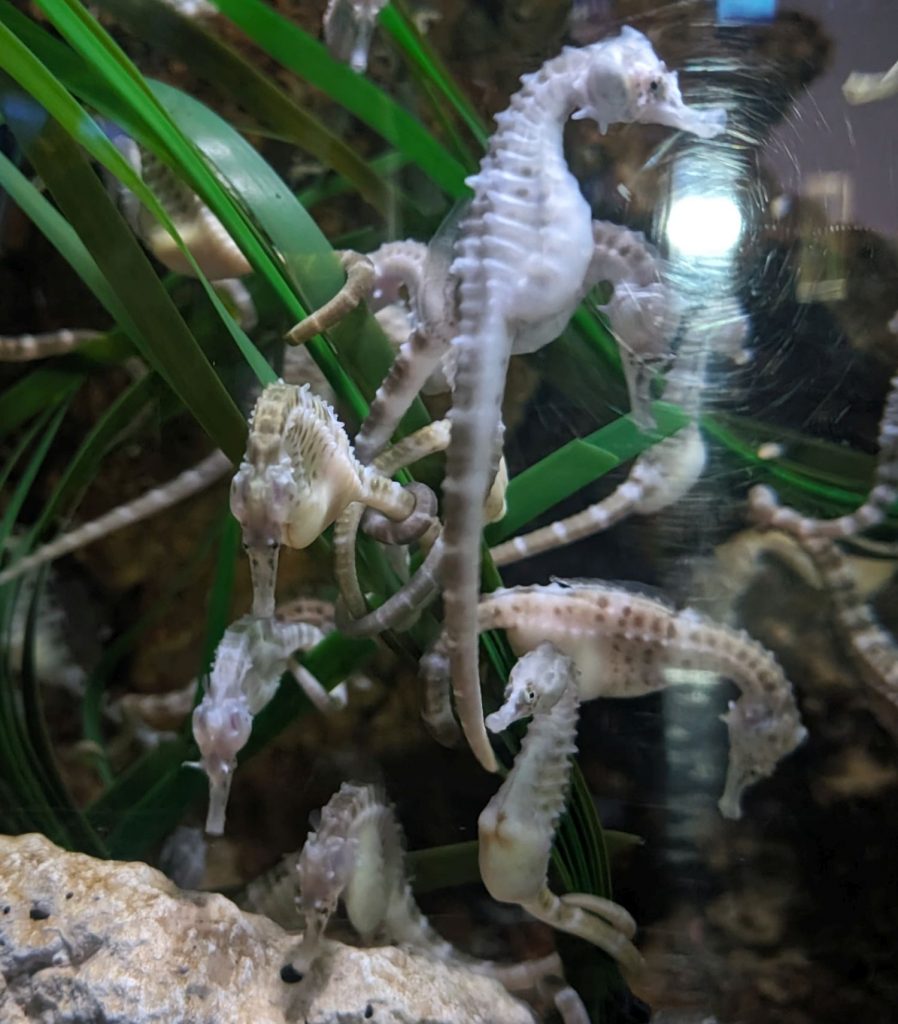
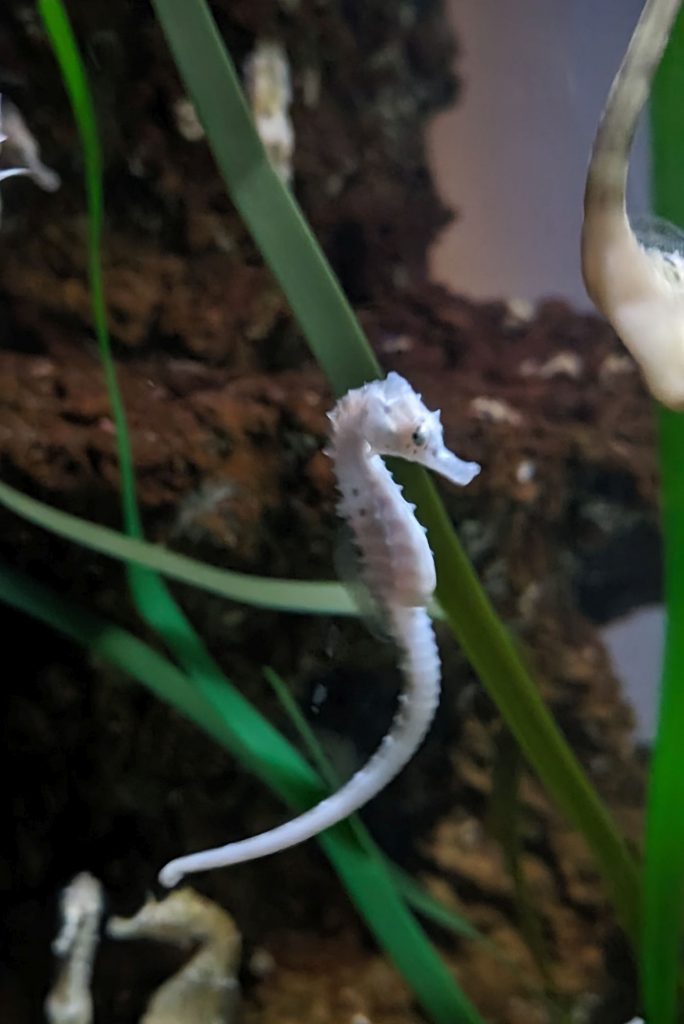
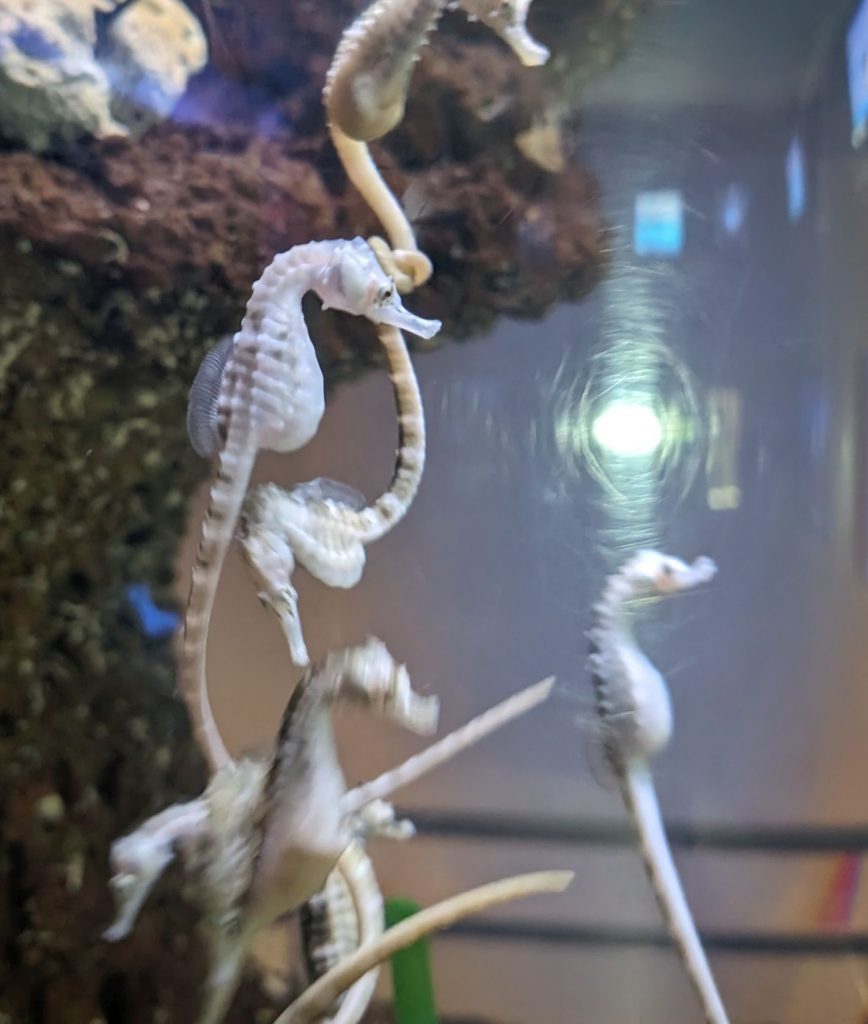
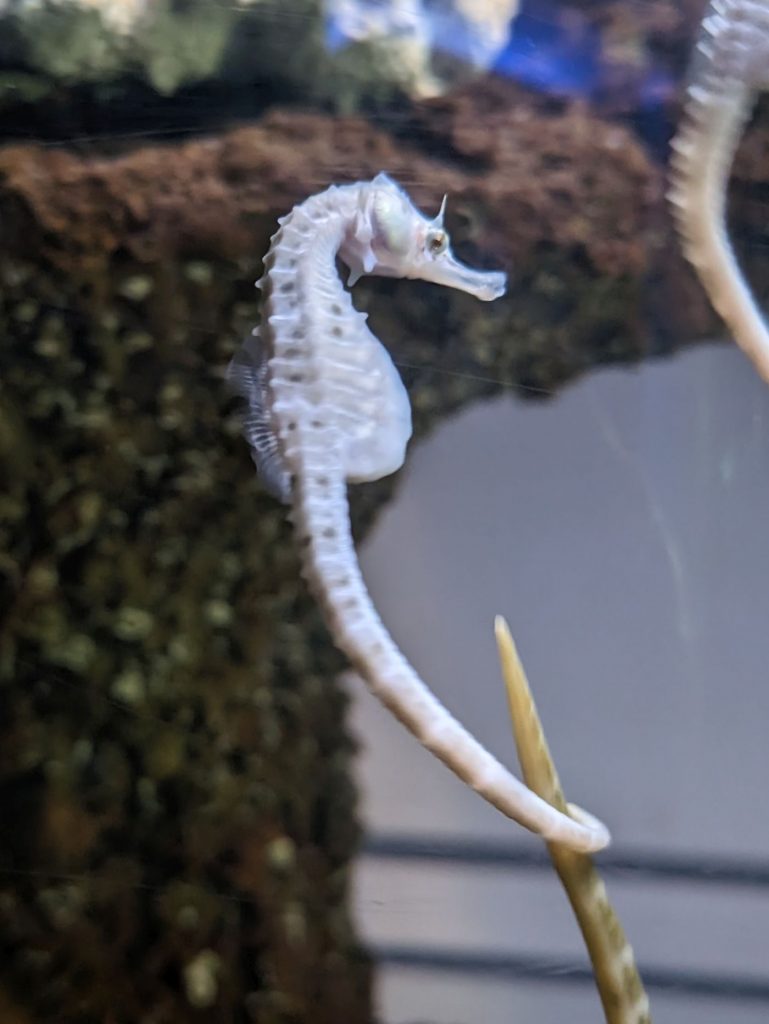
Can you tell that I like seahorses?
The walks to the various destinations were as beautiful and interesting as each site. One of the first things I saw was this bridge: La Pasarela Manterola. Its design resembles a ship with a mast 30 meters high to which 45 steel straps are attached, of which thirty hold the base and fifteen of them act as a counterweight between the structure and the artificial islet, formed on the riverbed. The walkway of Manterola, changed the image of the bridges over the Segura River.
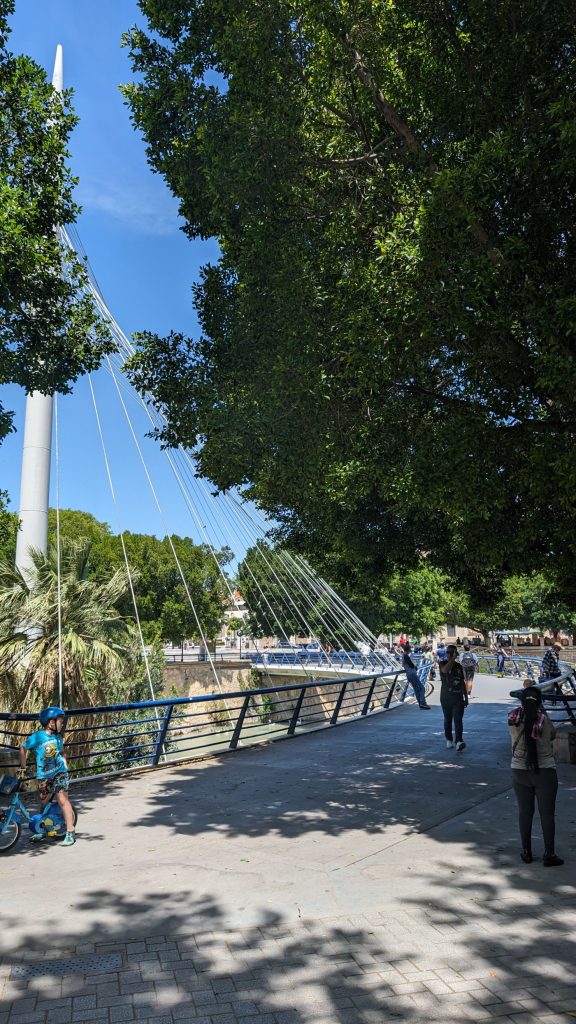
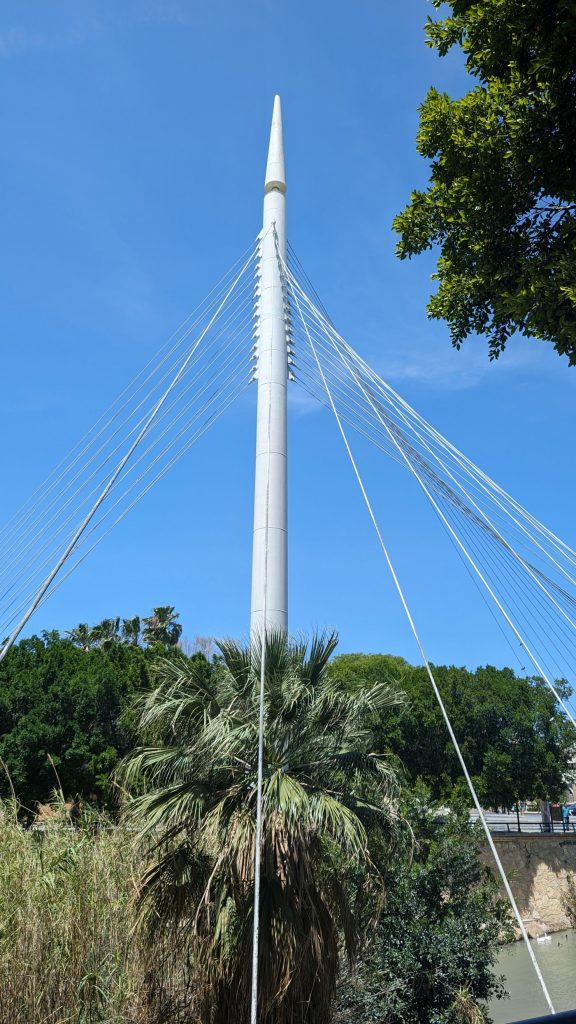
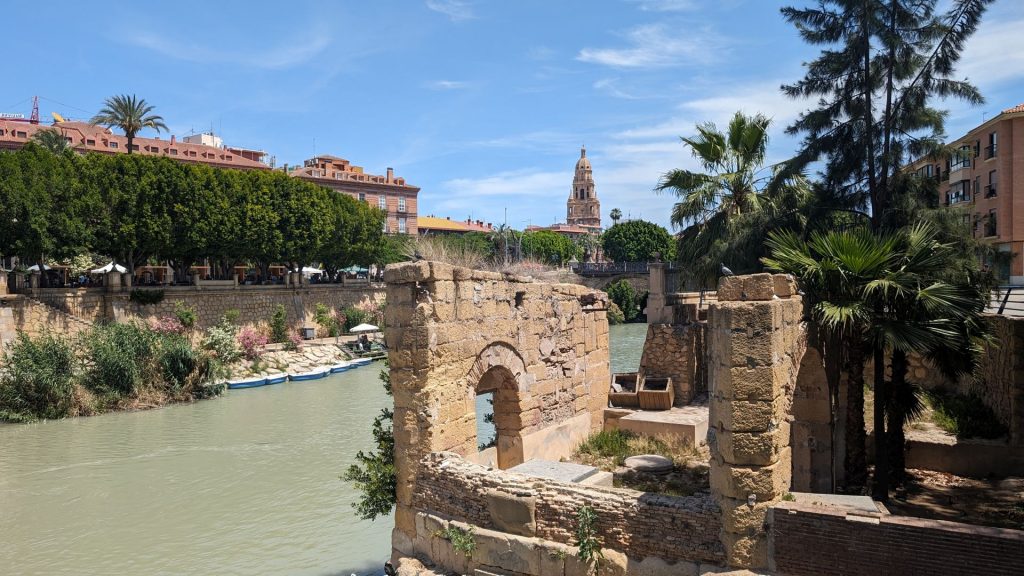
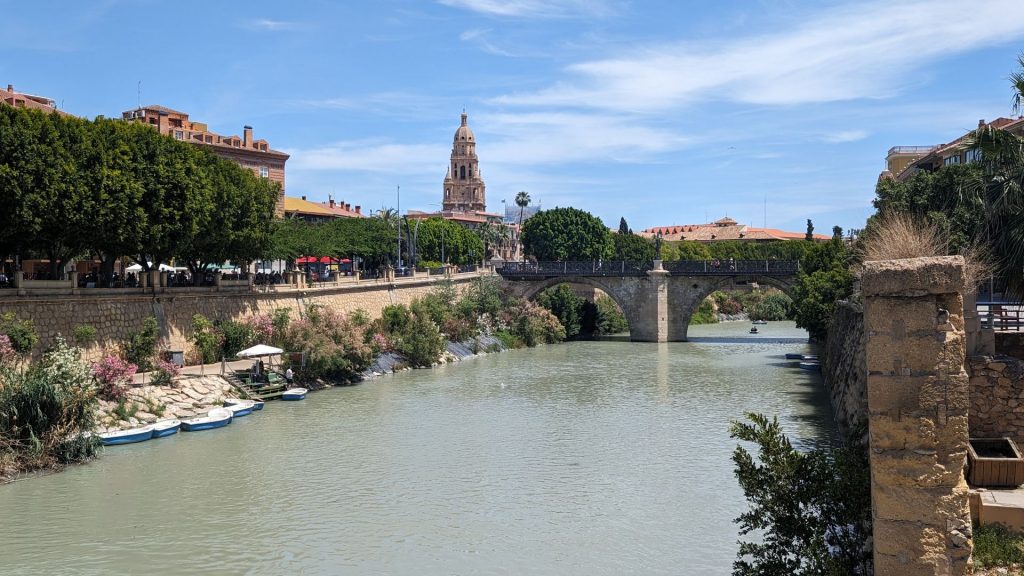
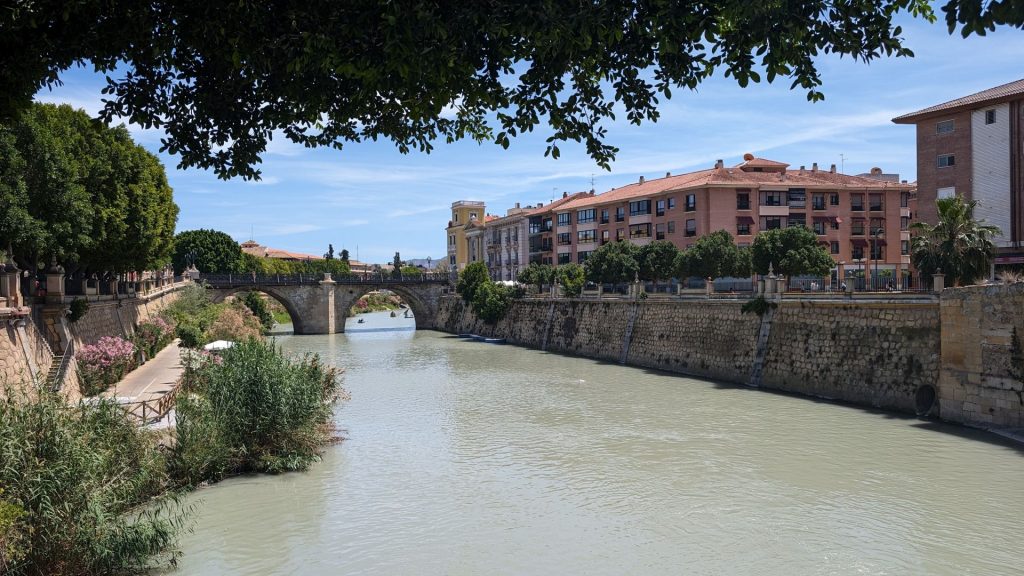
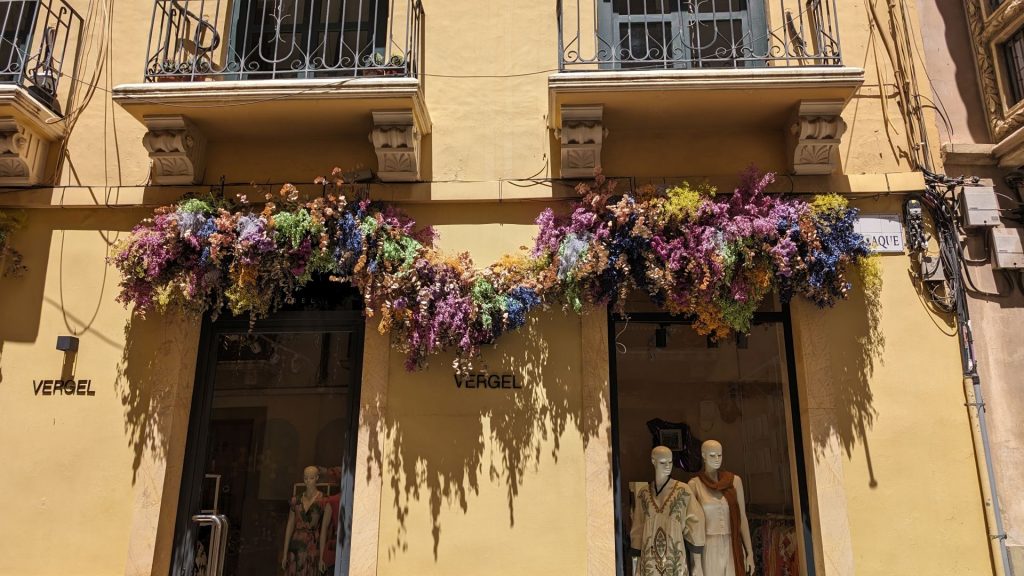
It was time to head to the casino! (No, not to gamble. If I recall correctly, I have gambled three times in my life. The first was a dog race and my dog won. I do not recall how much I bet or won. I am certain both were minimal amounts. The second and third times were in Las Vegas, Nevada. The first time I bet a quarter and won a dollar. A fine return on my investment! The second time I put $5.00 worth of nickels in a slot machine and lost it all. In short, gambling really isn’t my thing.) Back to the story: Real Casino de Murcia is a private club in Murcia. First opened as a gentleman’s club in 1847, the resplendent building has been painstakingly restored to its former glory. With its historical design dating back to an era when opulence was the de rigueur, the Real Casino de Murcia is one of the main attractions in Murcia. The mini palace-like building includes a two-tier library built by the English company Waking Gilow in 1916. It also includes a grand ballroom complete with crystal chandeliers and a ladies’ powder room with cherubs and angels painted on the ceiling.
That is the official description. I am just going to say that it was spectacular! First, the exterior, which I find to be quite beautiful!
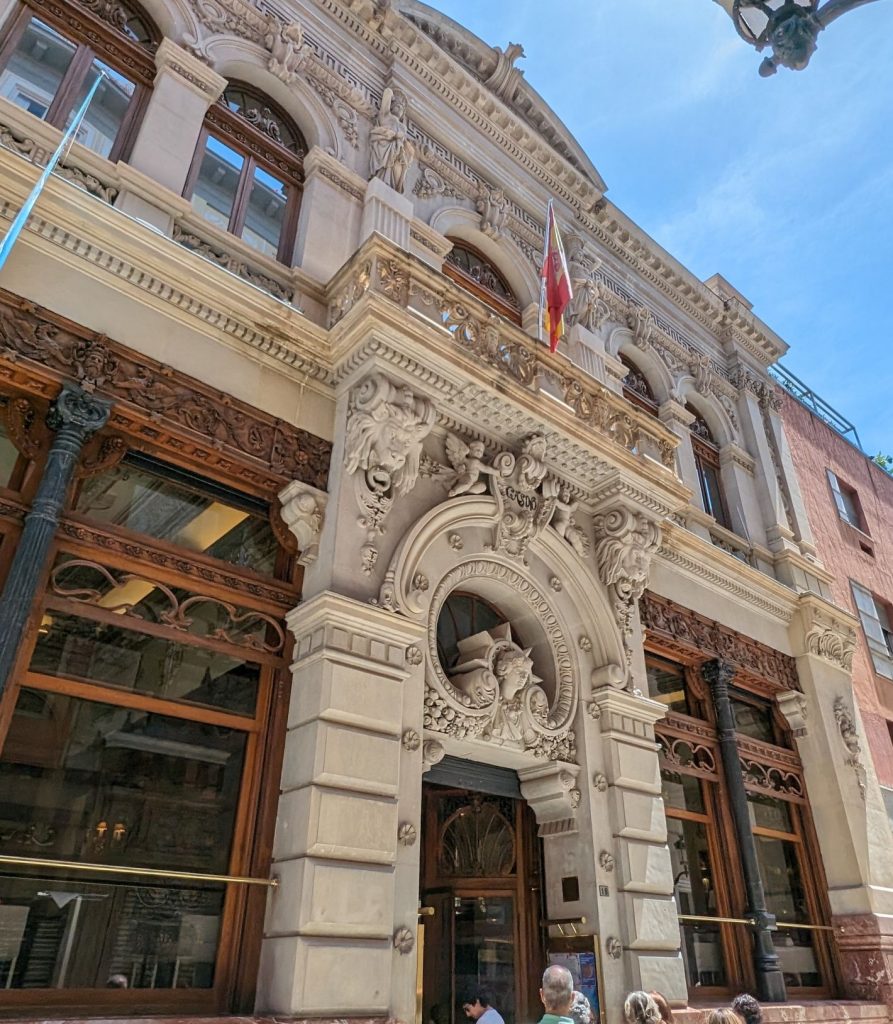
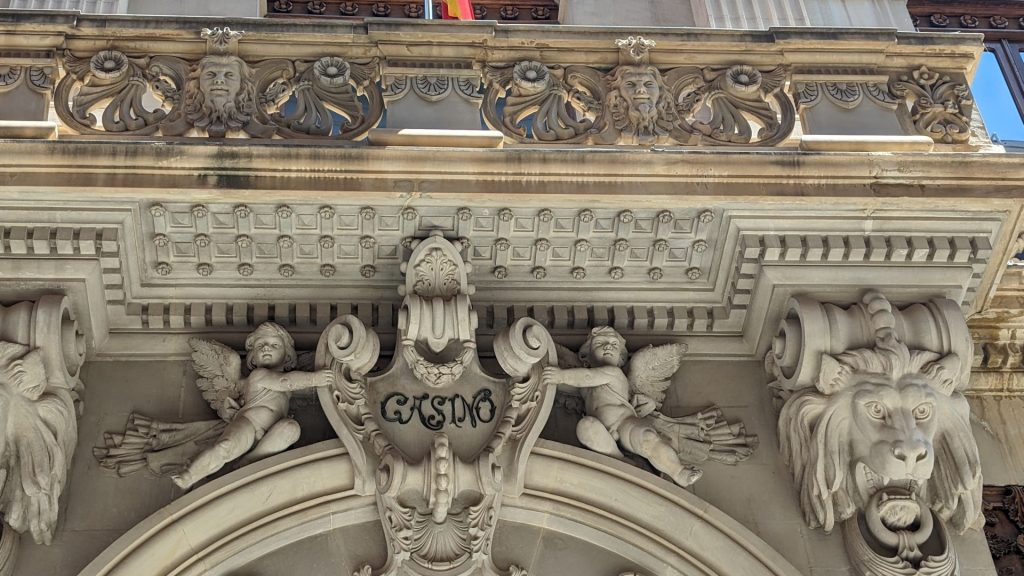
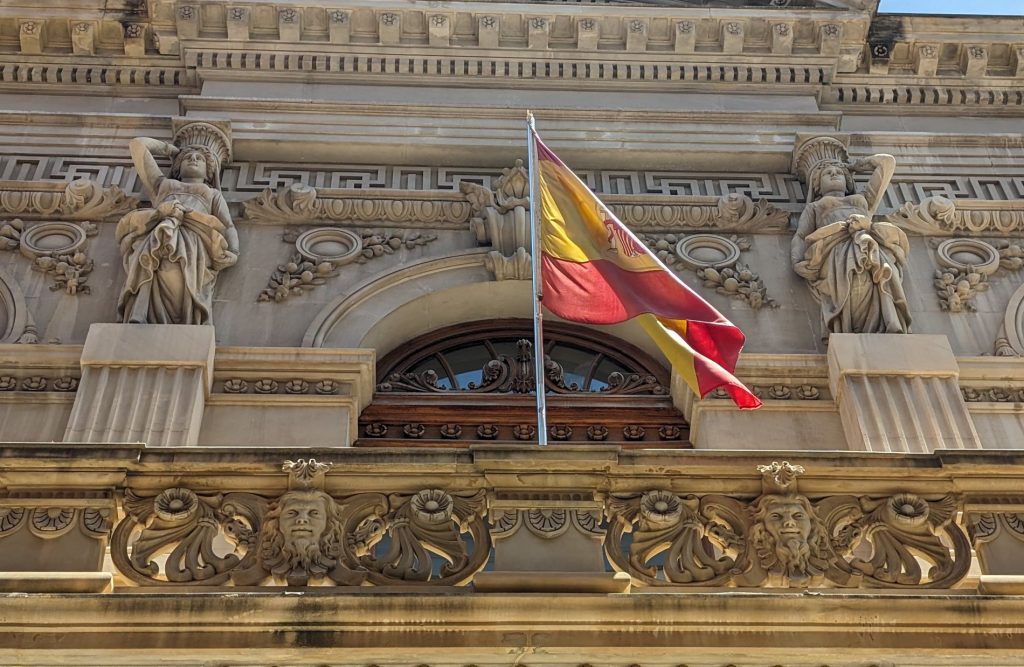
Then we move to the interior.
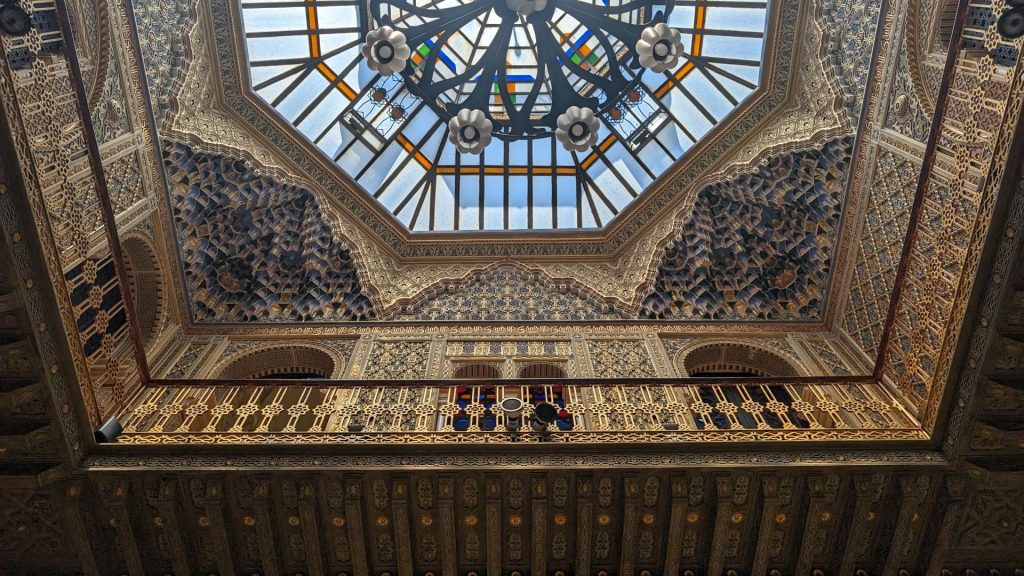
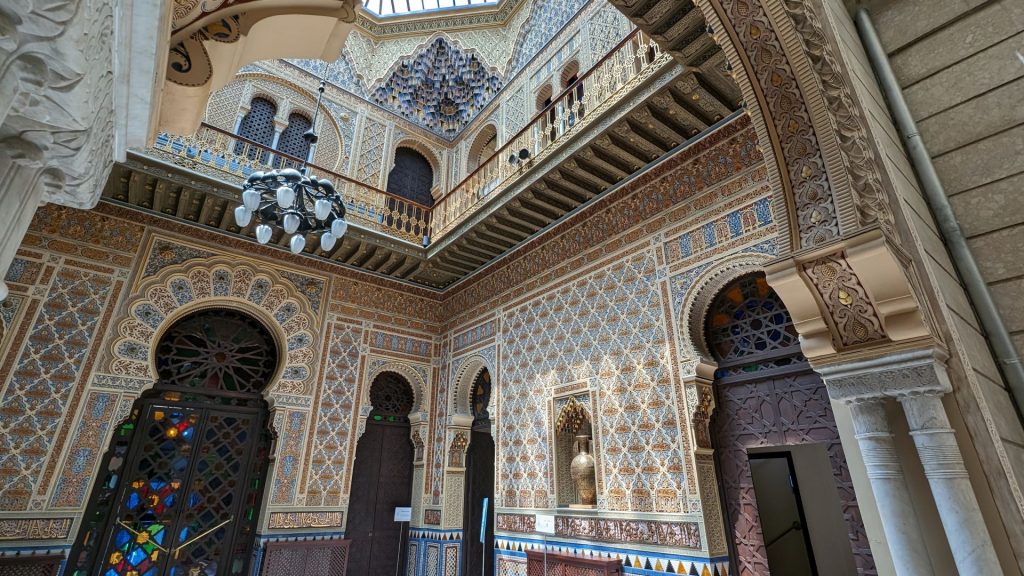
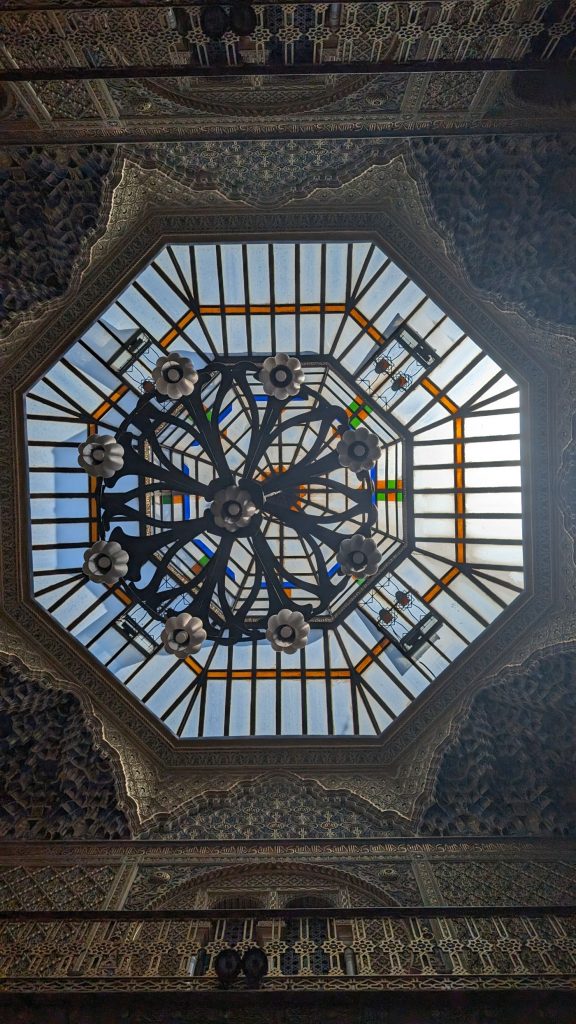
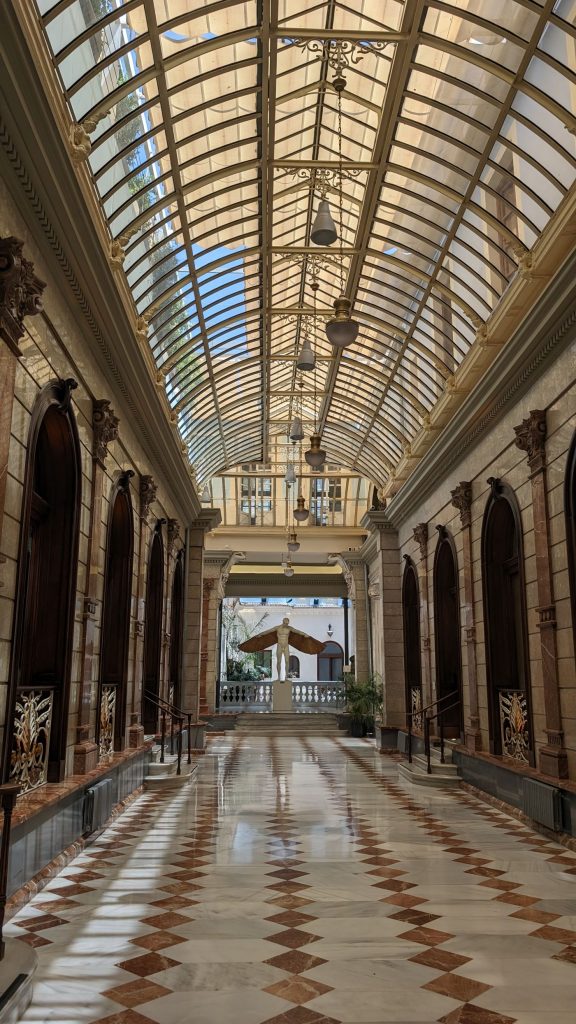
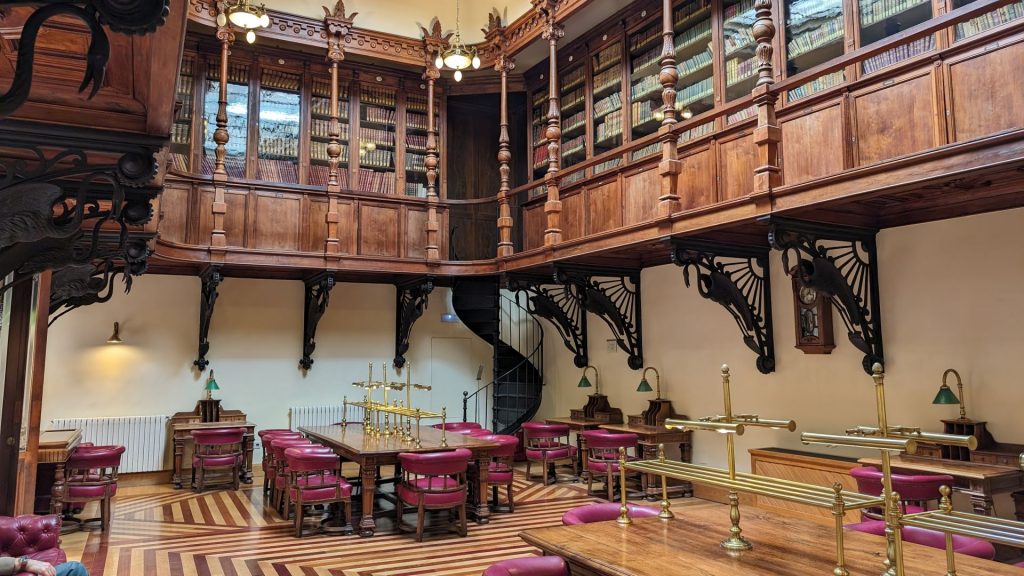
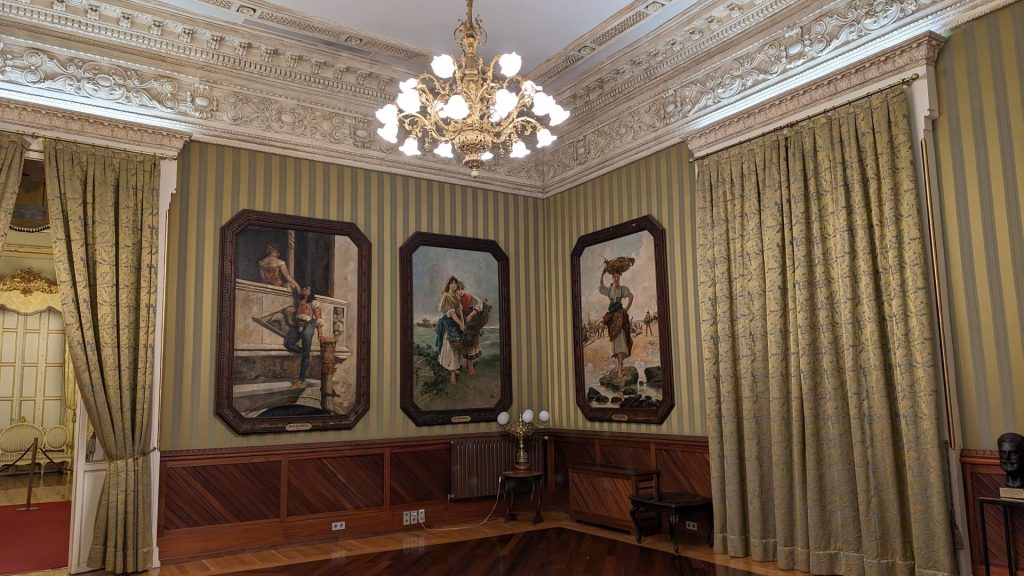
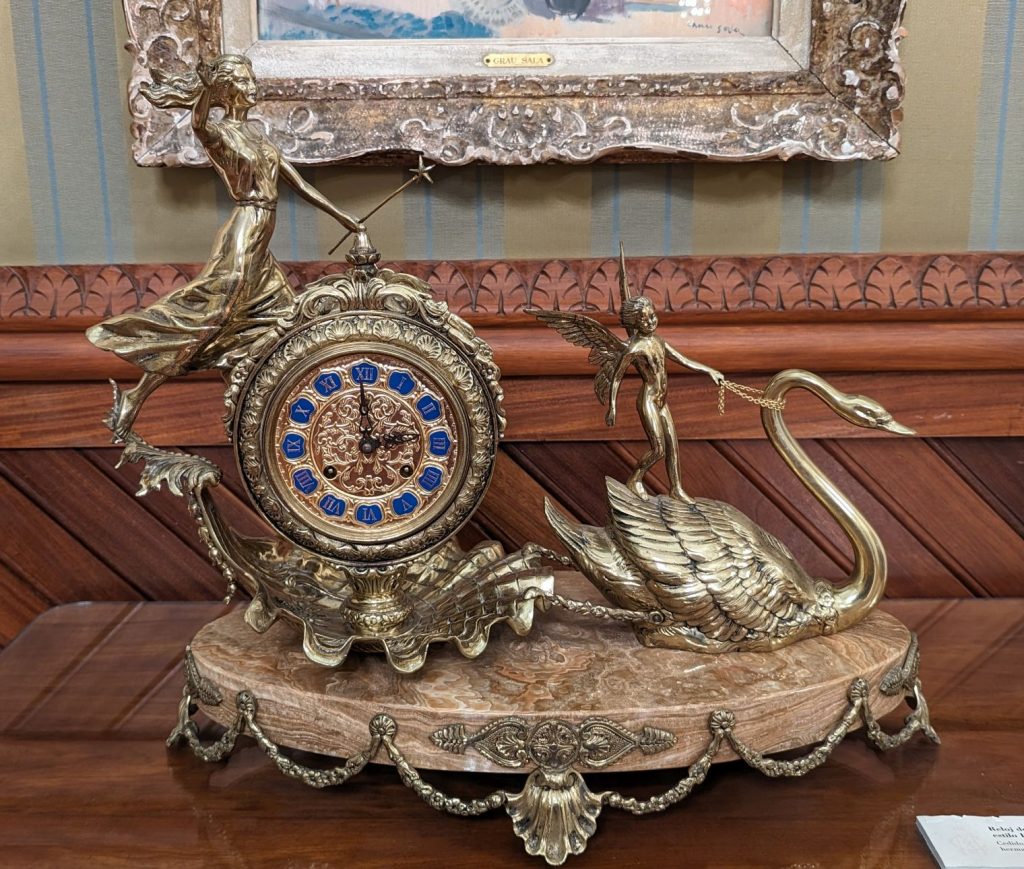
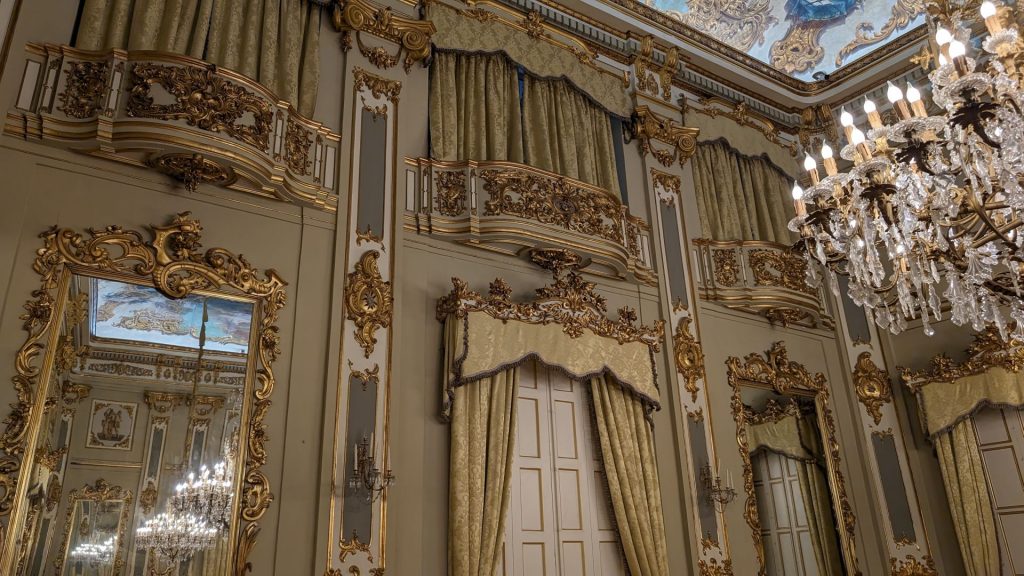
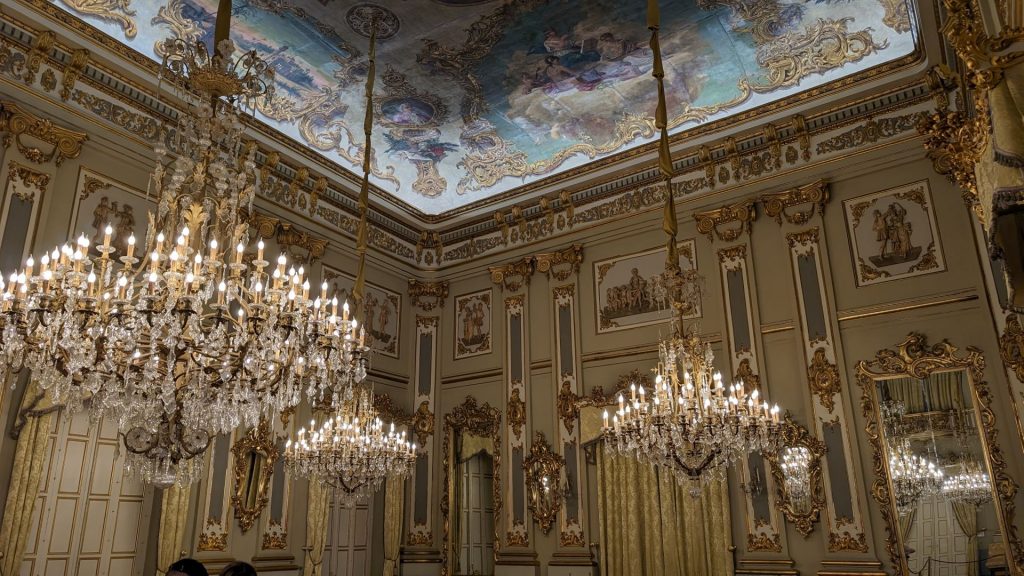
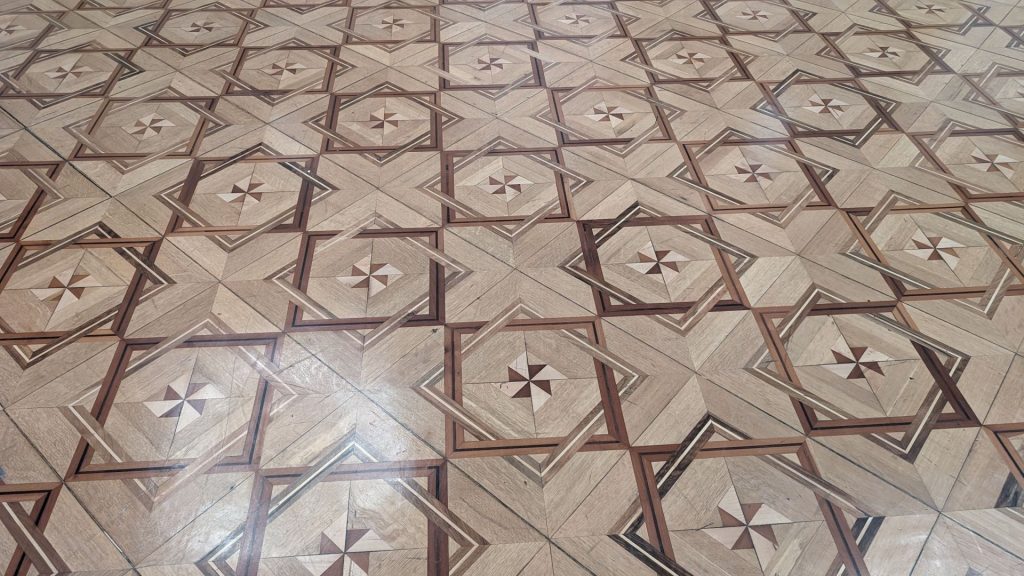
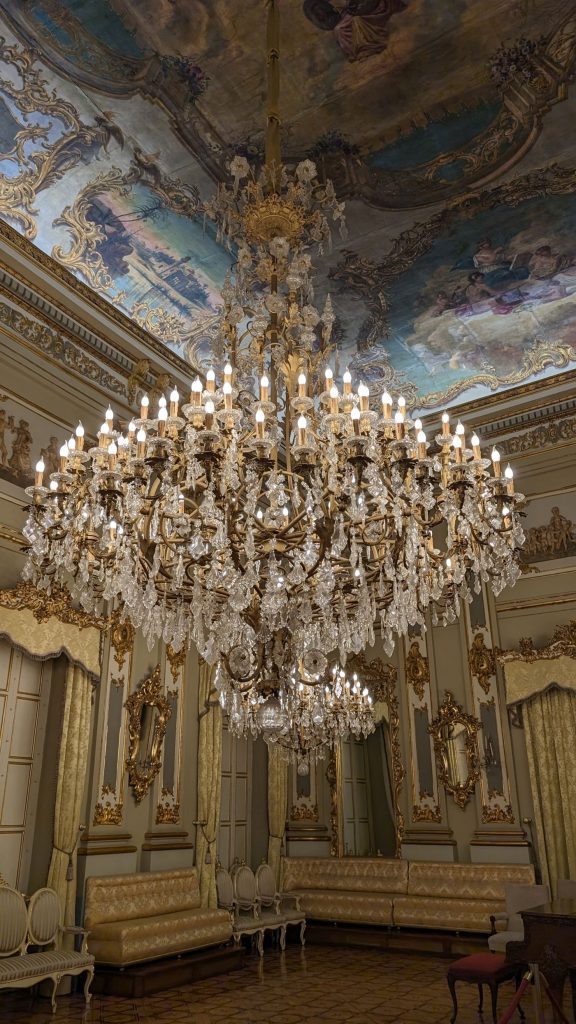
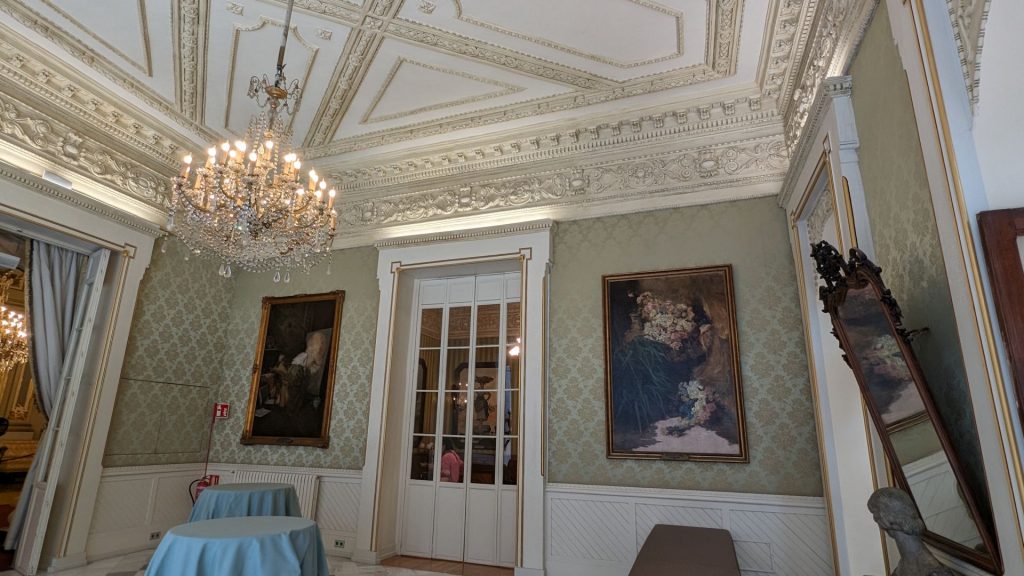
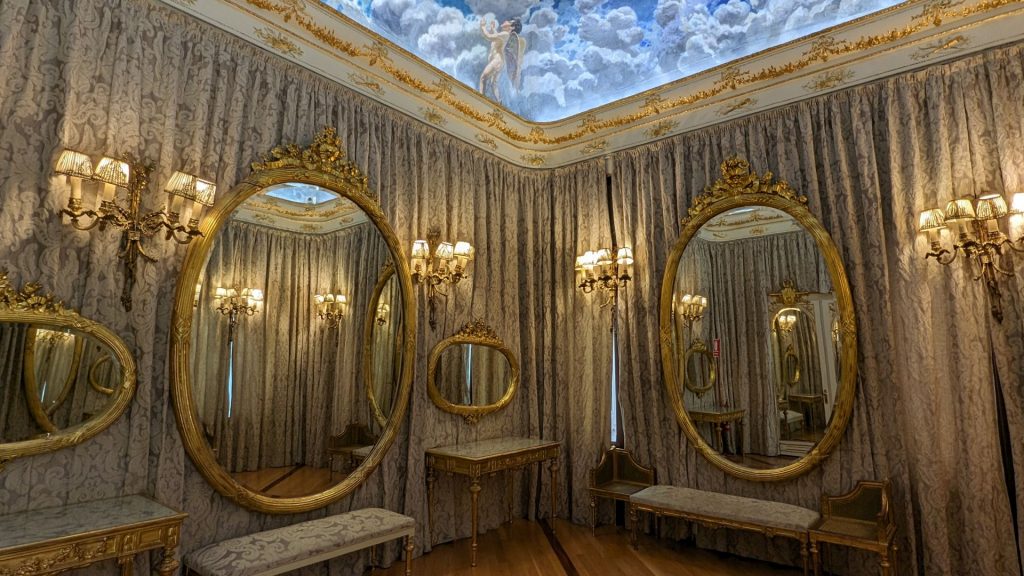
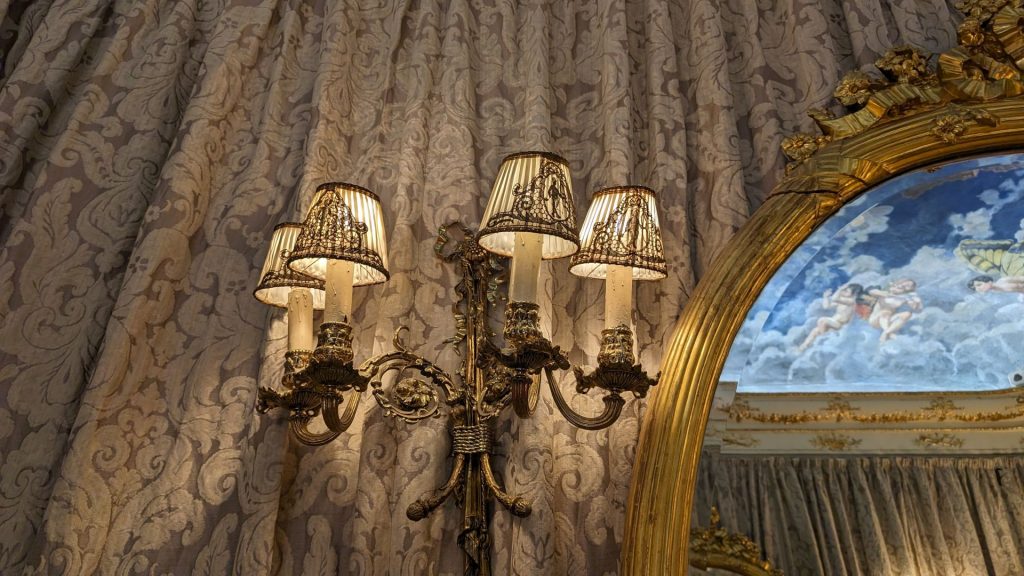
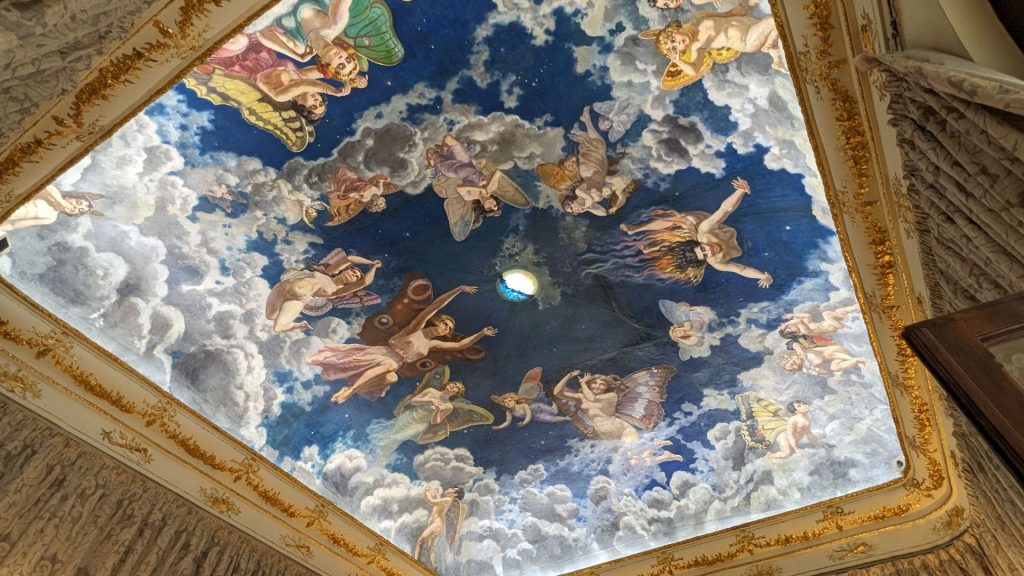
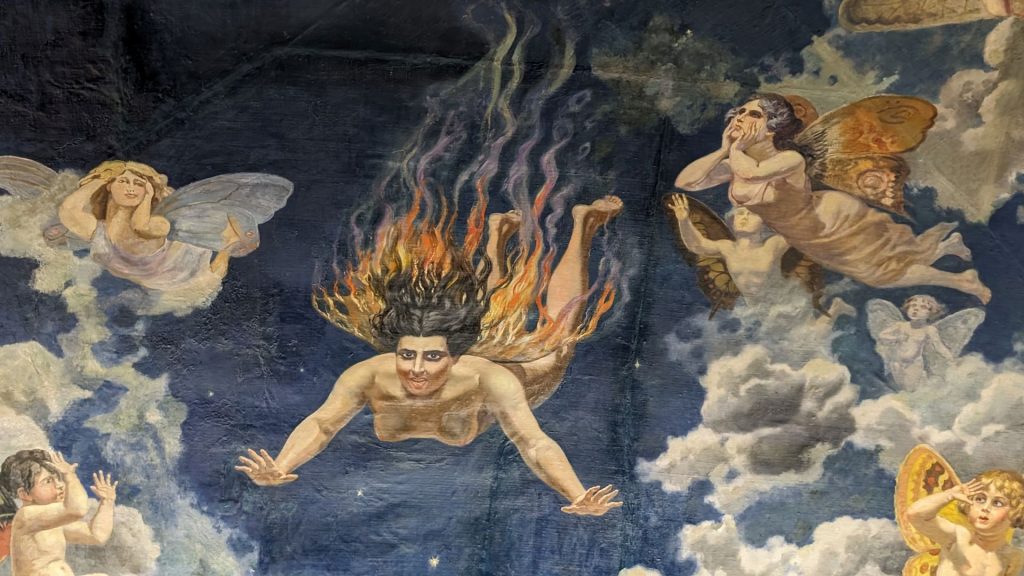
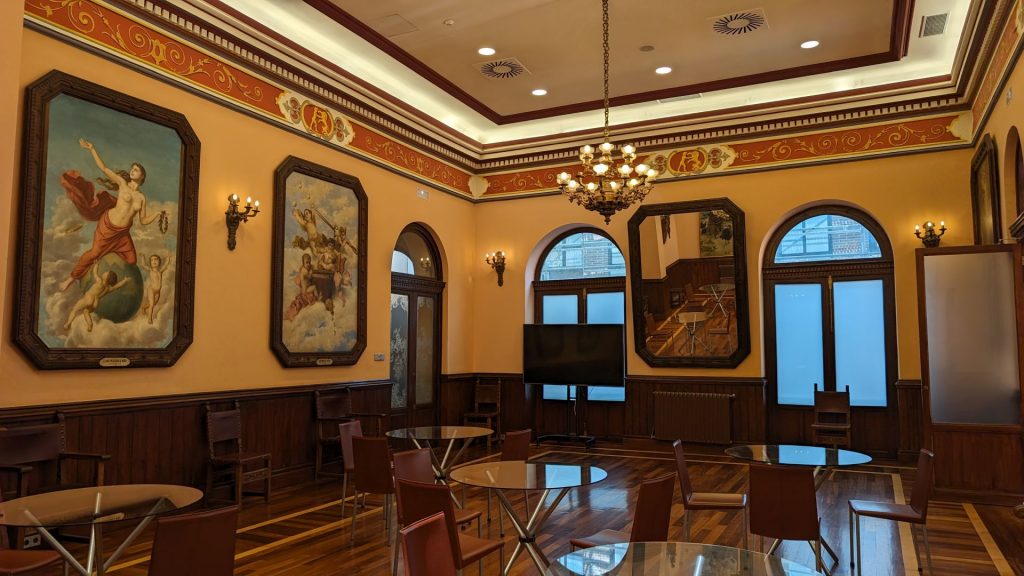
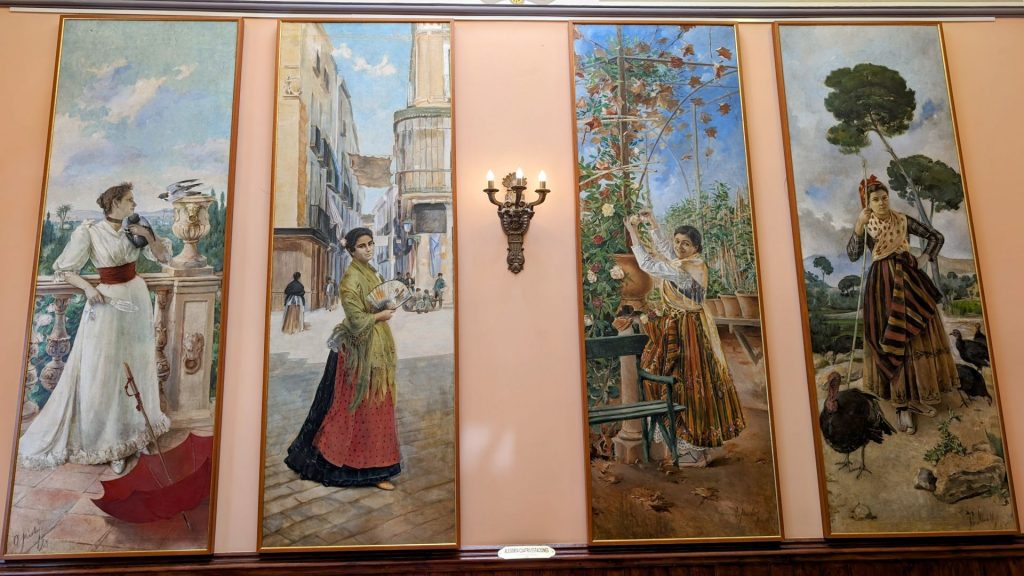
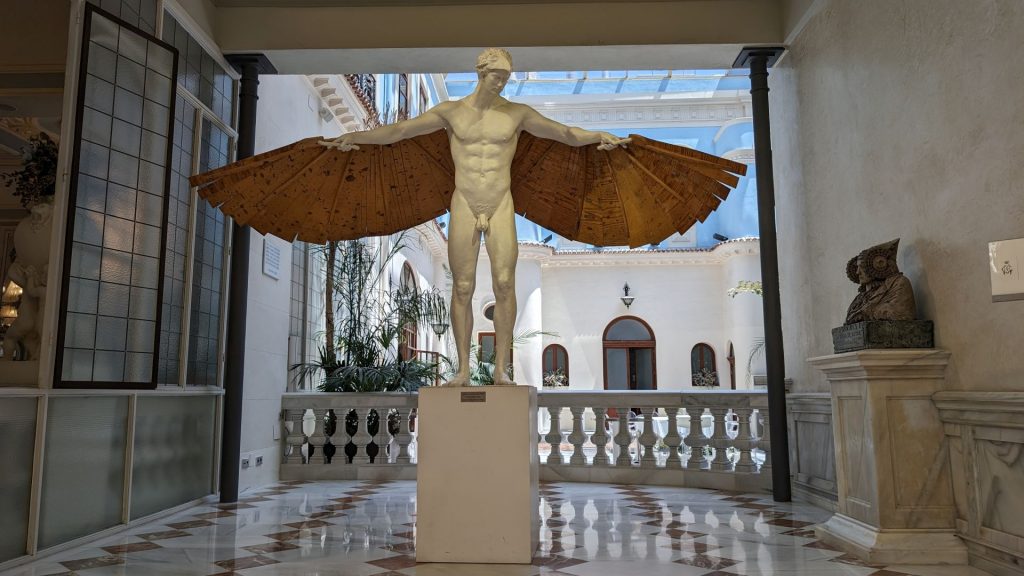
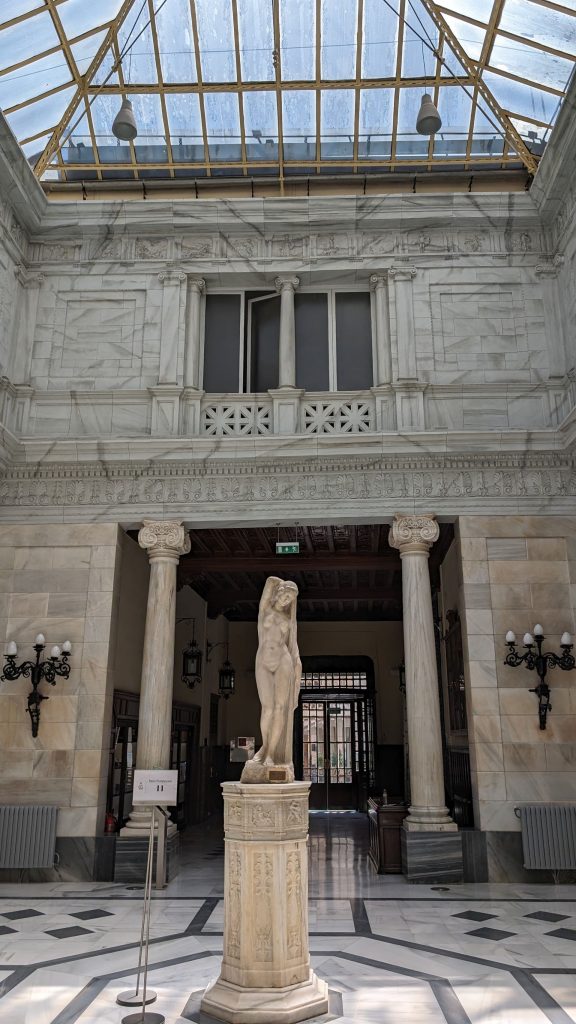
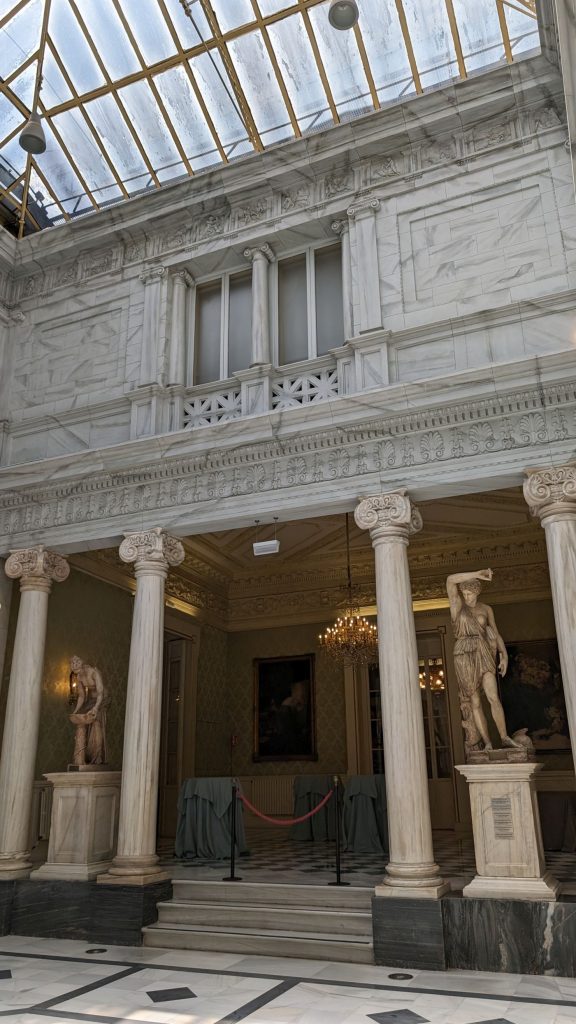
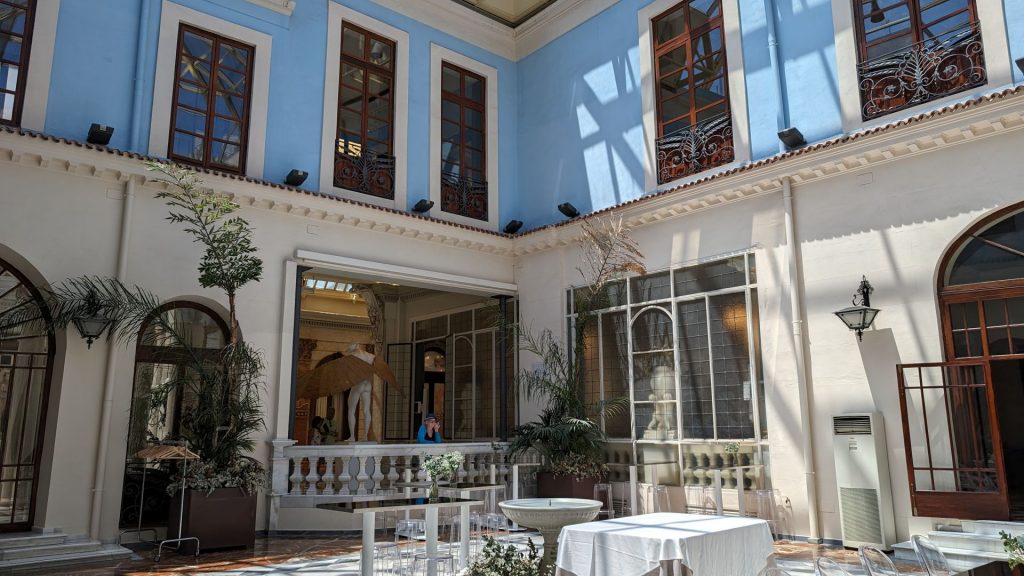
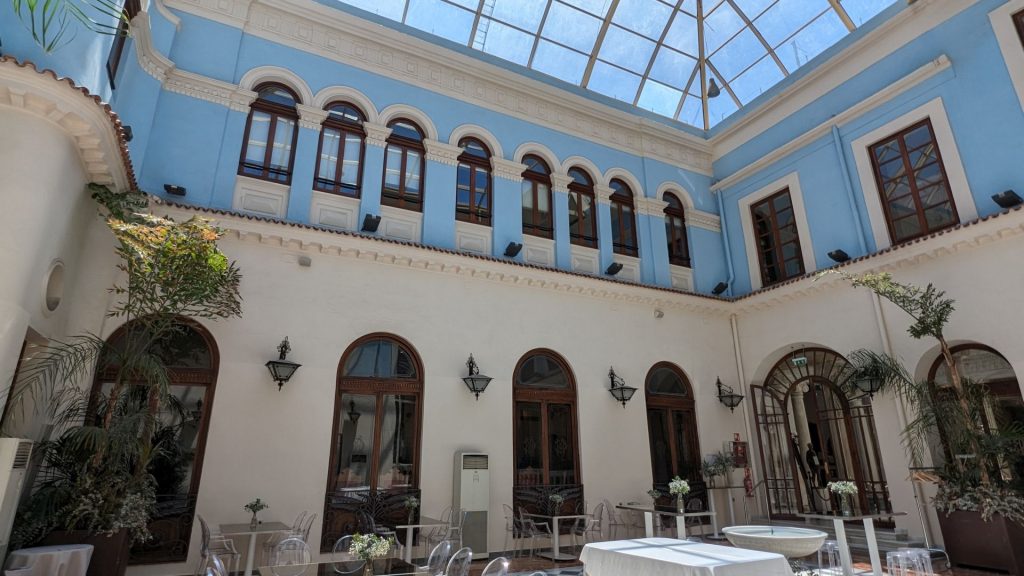
I didn’t get any good pictures of the next place: The Cathedral Church of Saint Mary (which was built in 1394 on the site of a mosque). There was some major construction going on which prevented me from taking the best pictures of (or even seeing all of) the structure. Here are the few not-so-good pictures I took of what little I could see. Oh, and it was closed, so no interior pics.
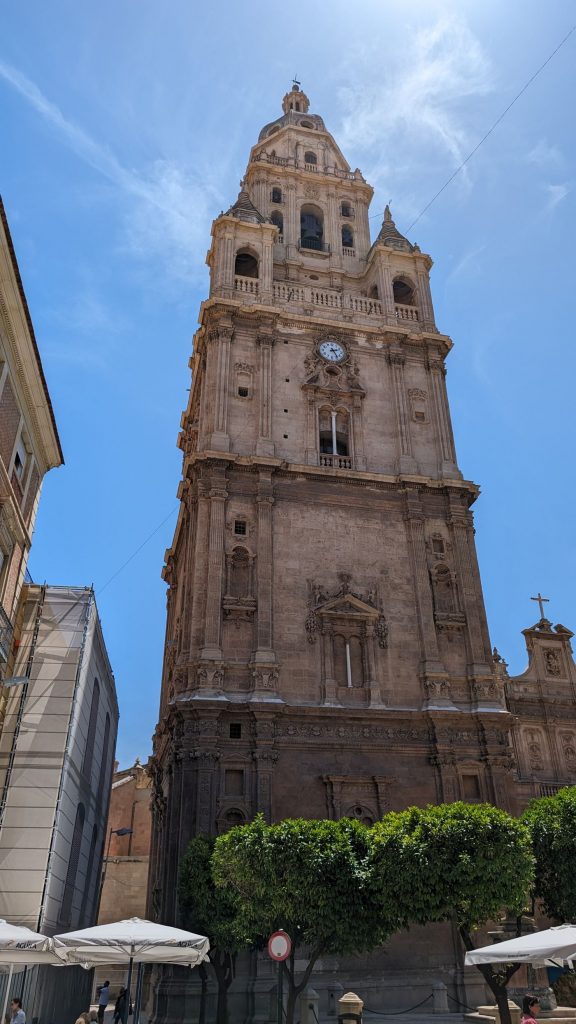
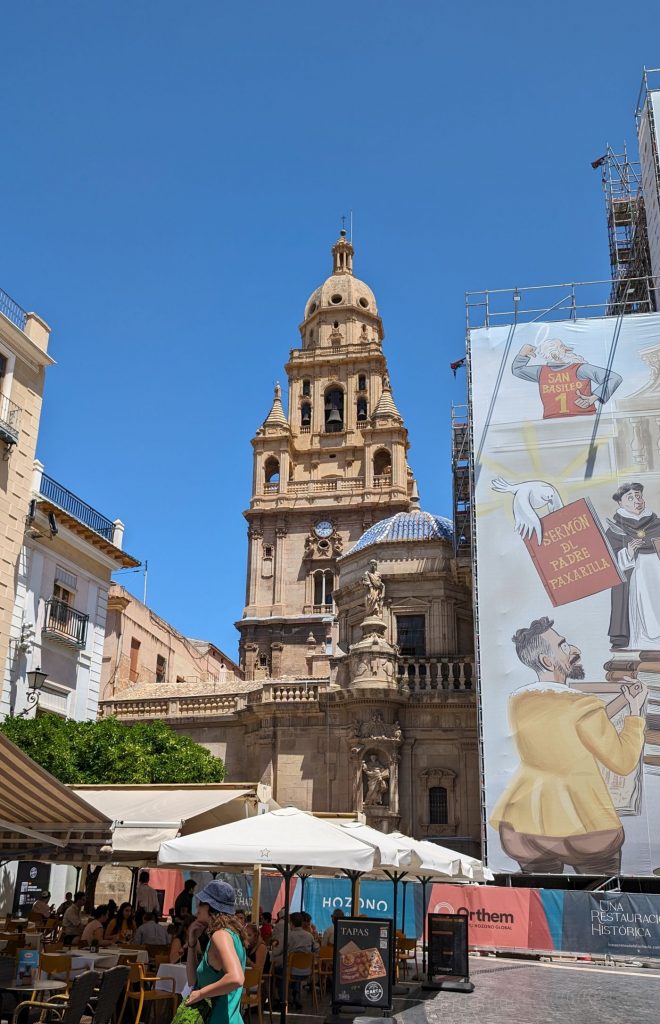
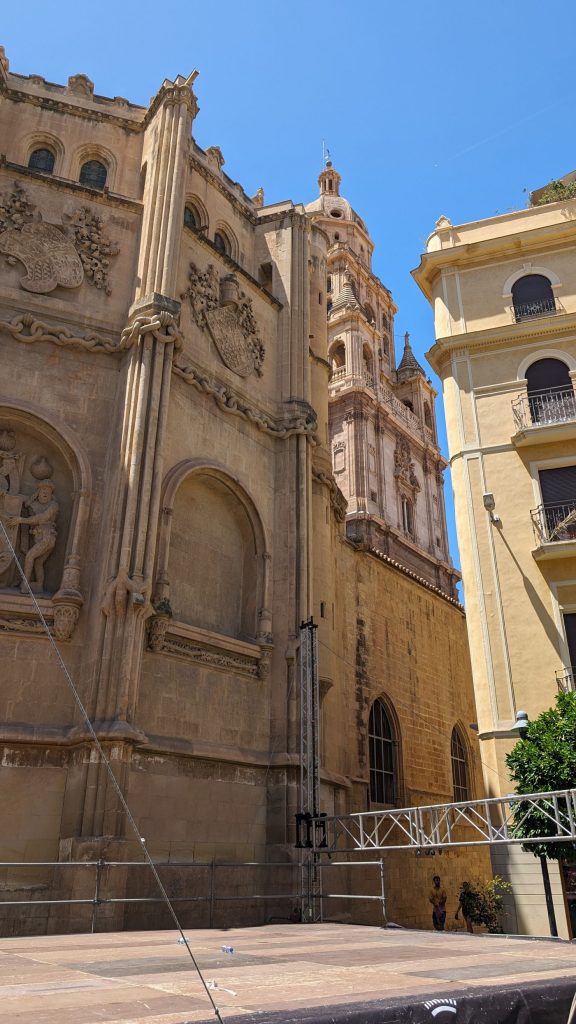
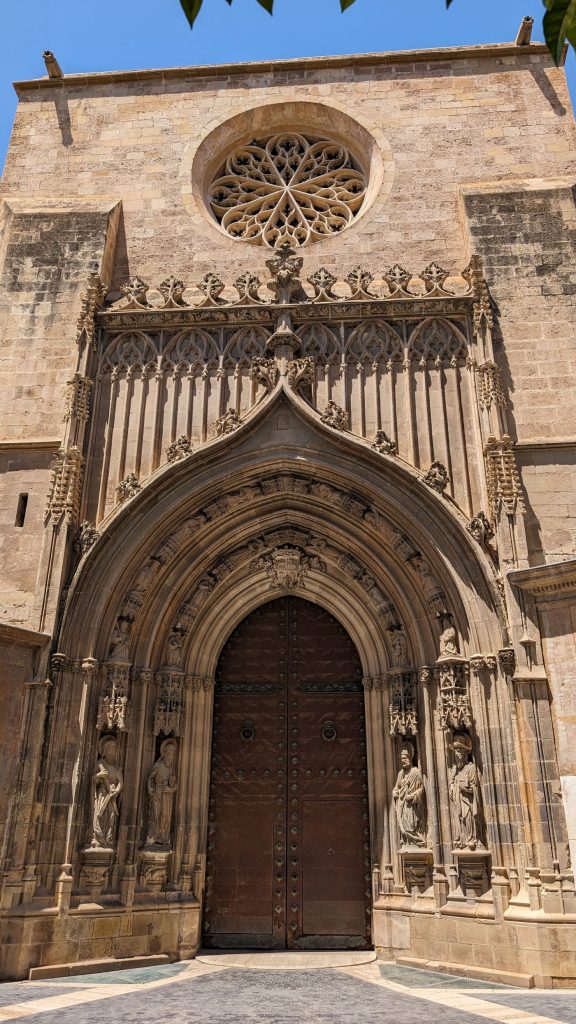
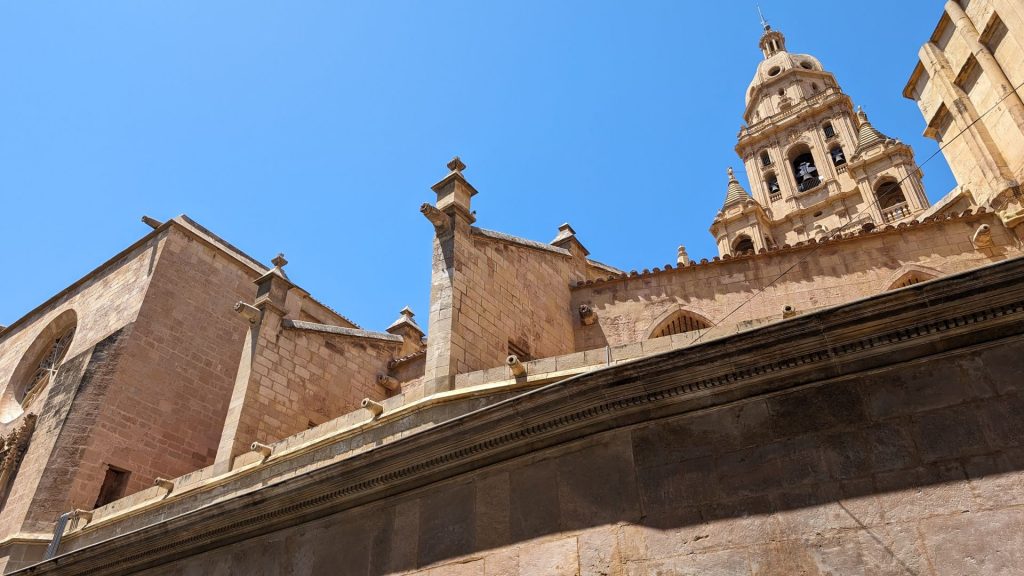
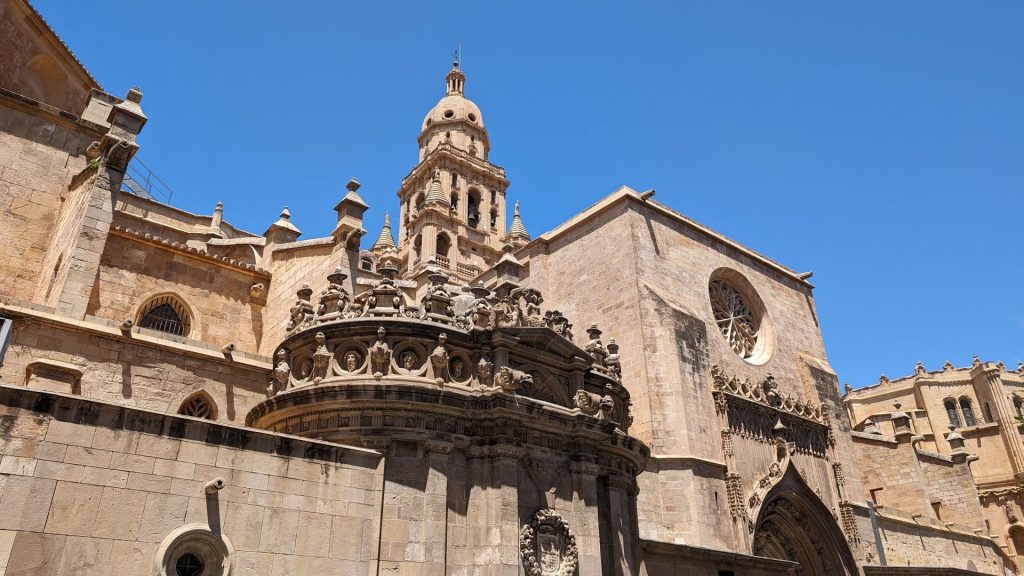
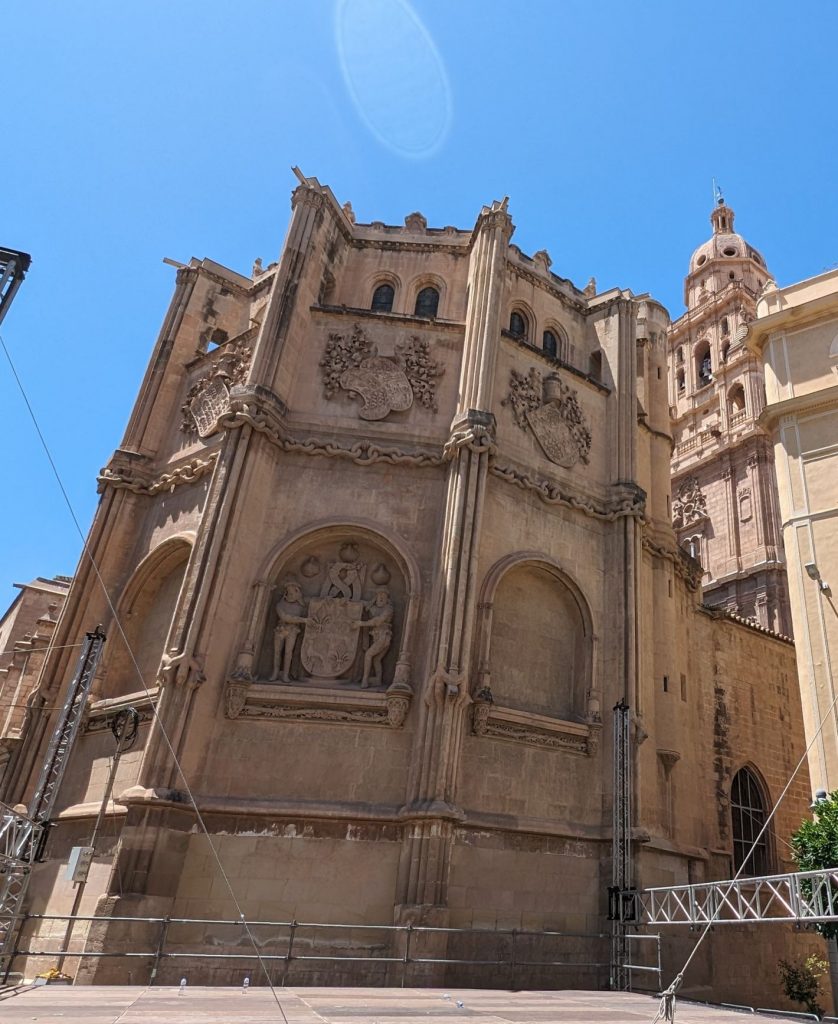
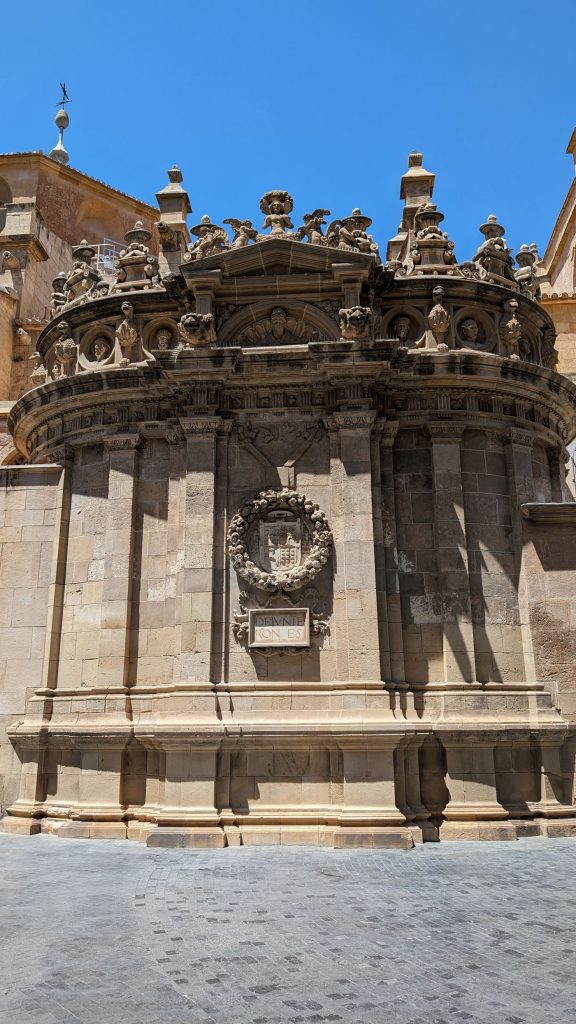
It was time for lunch. I ate at the beautiful square (one of many) near the cathedral. I ordered something that had “sirloin” in it. Turns out it was kind of like mashed meat on the inside. It was quite good!
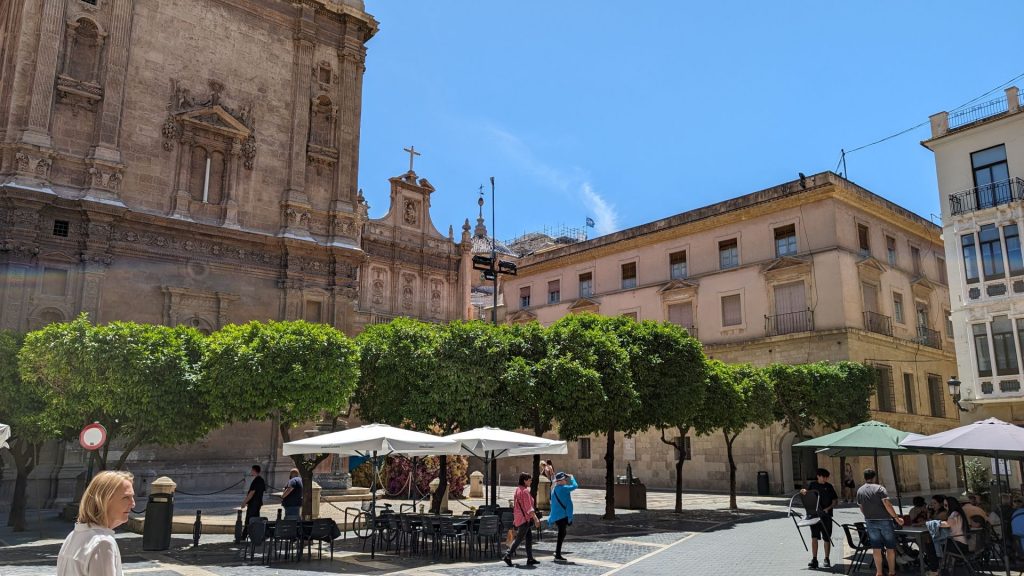
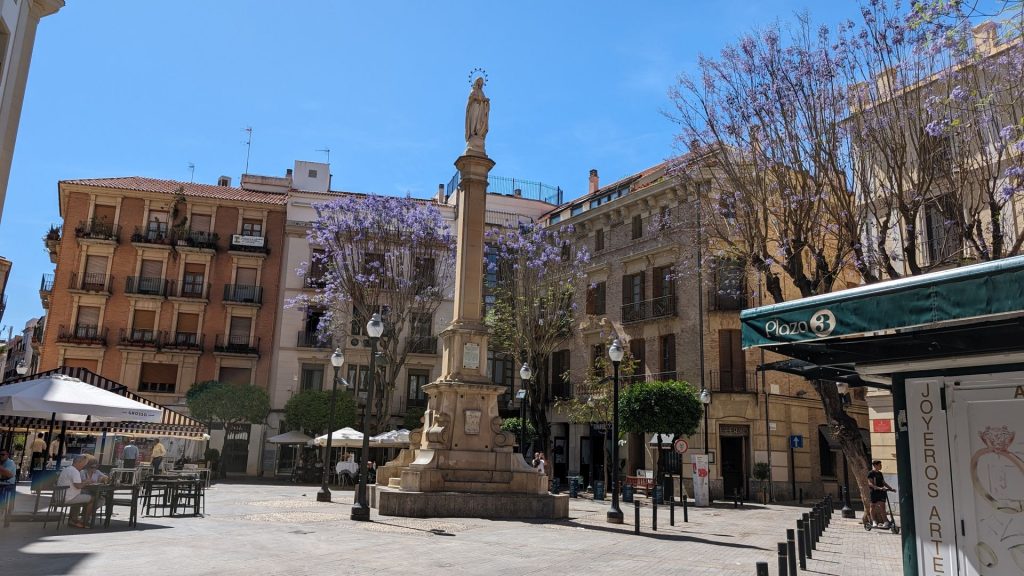
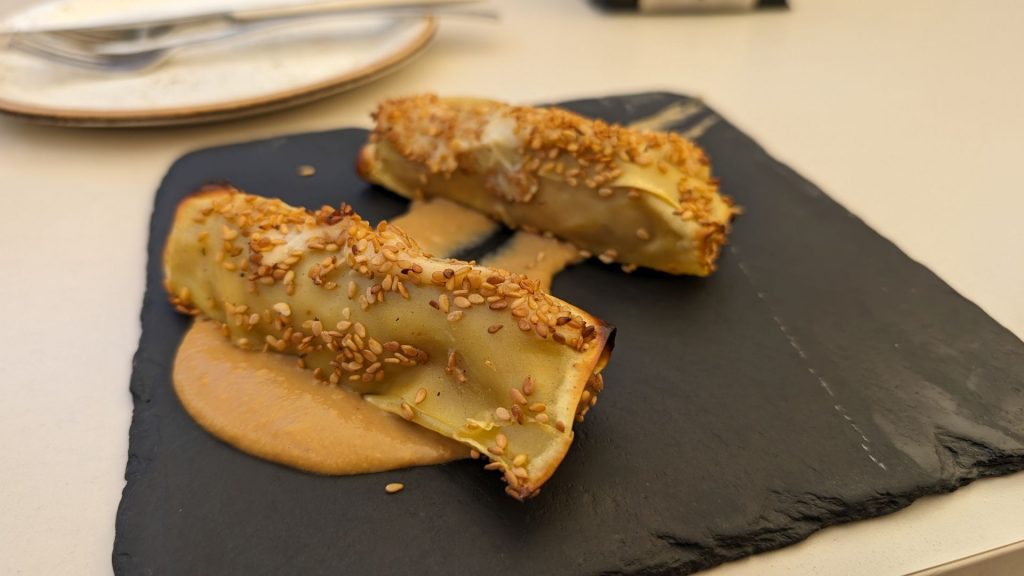
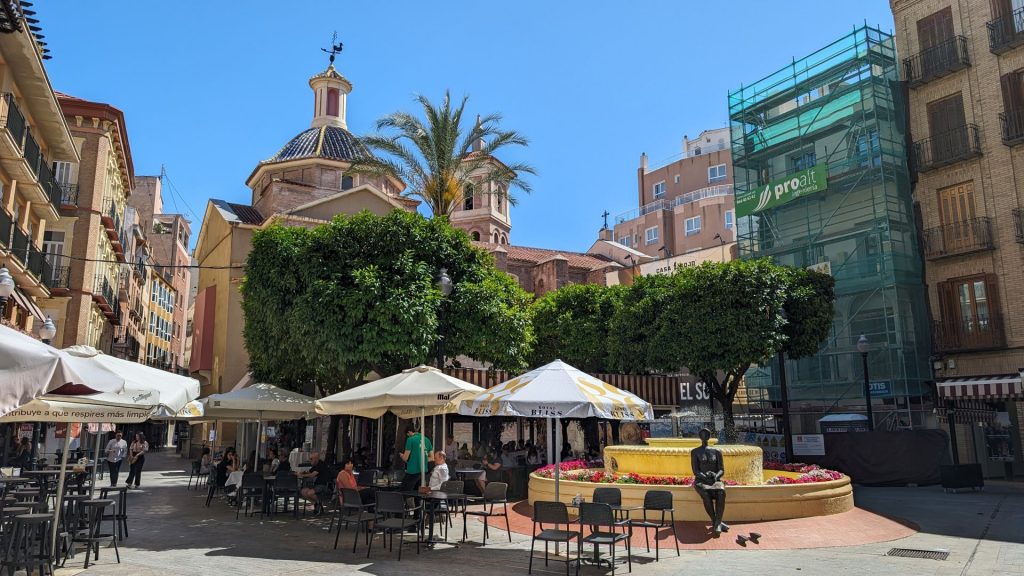
The walk back to the bus station consisted of gardens, Jardín Botánico del Malecón and Floridablanca Gardens, the Bridge of the Hazards, and the Segura River (a bit of which you saw earlier in this post). It was so calming and absolutely lovely! I left Murcia with a strong sense of peacefulness. Here’s a bit of info about each of these things.
Designed during the 19th century, the Malecón Gardens are one of the top things to see in Murcia and a favorite place where locals walk and admire indigenous plants from around the world.
Named after economist and lawyer José Moñino Redondo, Count of Floridablanca, the Floridablanca Gardens were the first public gardens to open in Spain. Located in the El Carmen district of the city, the park is an oasis of shade during the sizzling summer months thanks to centuries-old ficus trees that line the pathways.
The Bridge of the Hazards, also called the Bridge of Dangers or Old Bridge, is a symbol of the city and joins the Carmen neighborhood with the historic center. It is the oldest bridge in Murcia. It was built in 1718 and was completed in 1742. Its name was given because at the end of the bridge, the part that links with the neighborhood of Carmen, was built a temple dedicated to the Virgin of Dangers, an icon for the Murcians to which they owe absolute devotion. They say that anyone who had to cross the river invoked the protection for the fear of the terrible floods caused by the Segura river as it passed through Murcia. It is still the custom of many people in Murcia to be sanctified every time they go through the bridge by looking at Our Lady.
The Segura River
Through the Bridge of the Hazards runs the daily life of the neighbors of the city, it is also the place through which some of the most important events pass, as is the case of the “Los Coloraos” procession every Holy Wednesday. From there you can see, on the left bank of the bridge, the “Monument to the Burial of the Sardine” that looms in the river next to the bridge, and the “Mills of the River”, former flour mills of the 19th century and today a museum and exhibition hall. As well as the Glorieta and the tower of the Cathedral of Murcia.
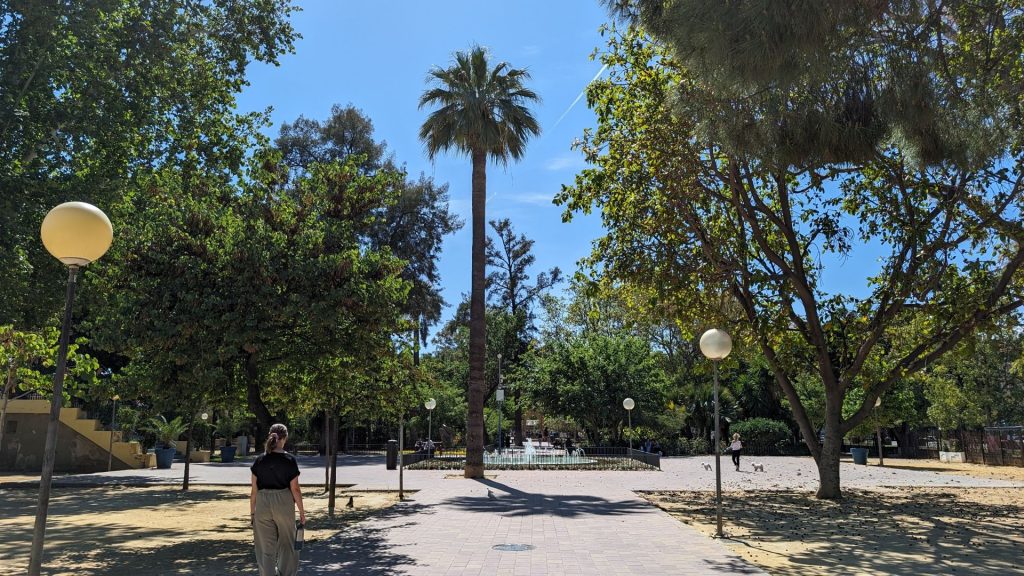
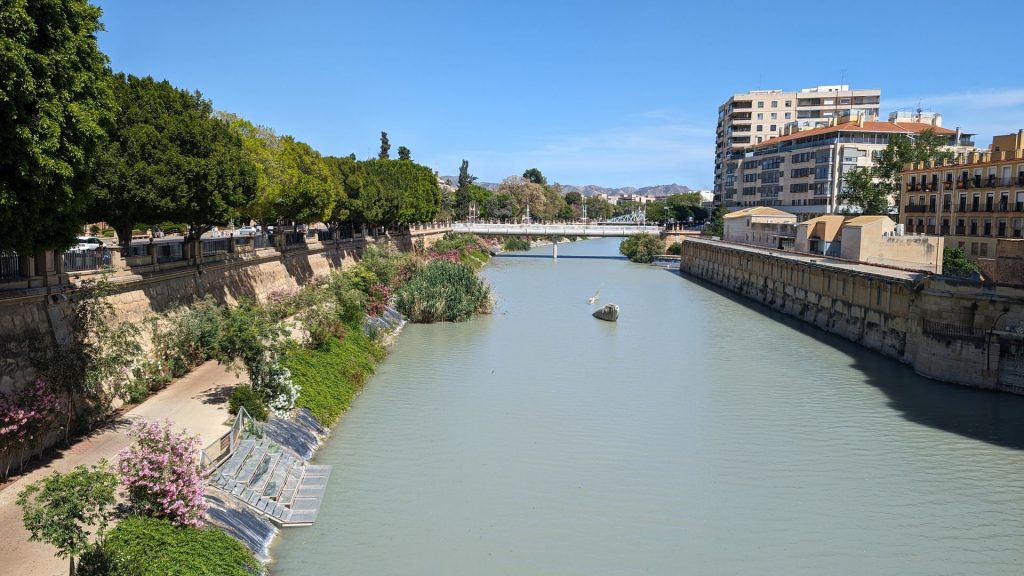
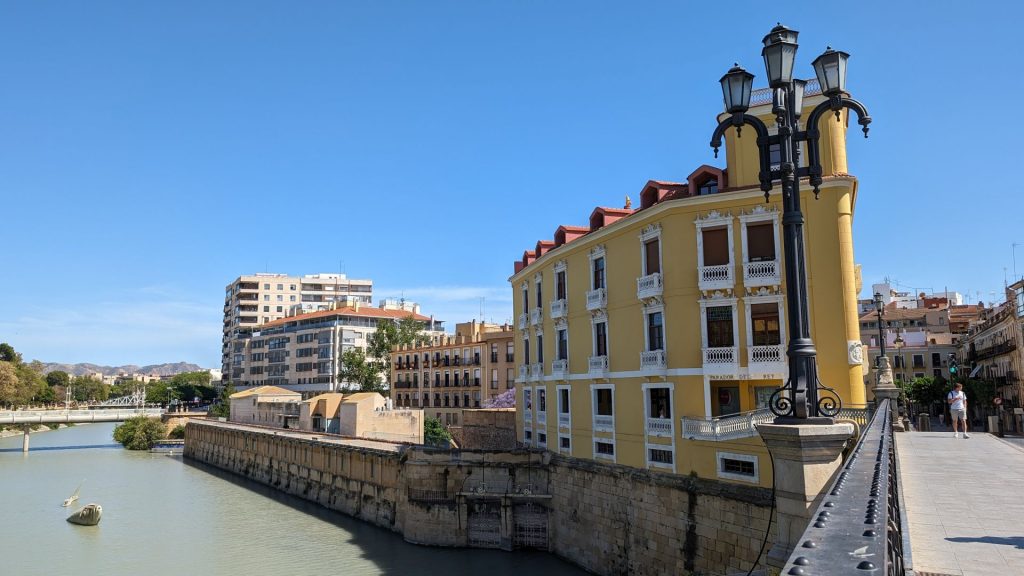
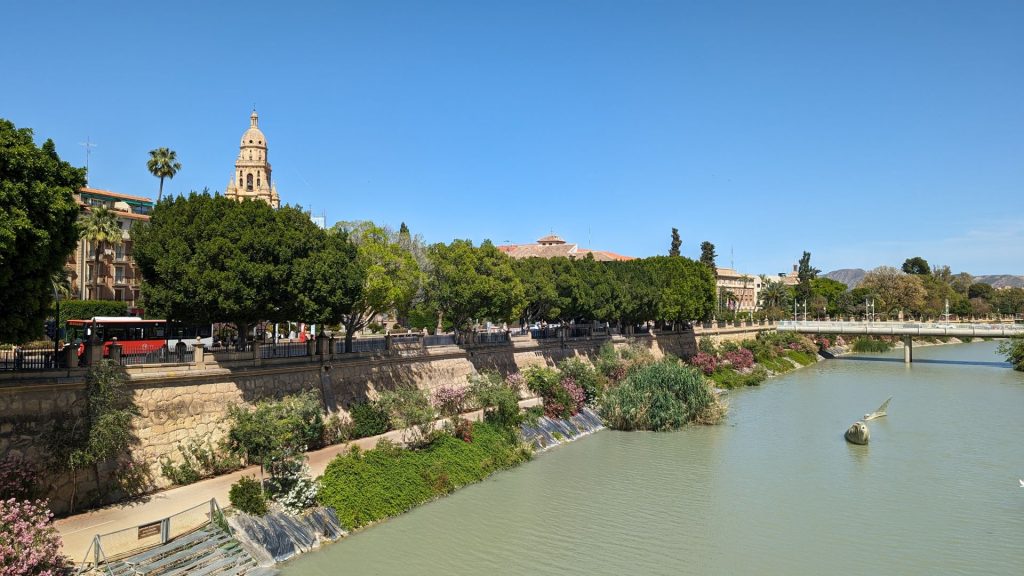
I couldn’t tell what that thing in the water was so I enlarged the picture. It is a fish!
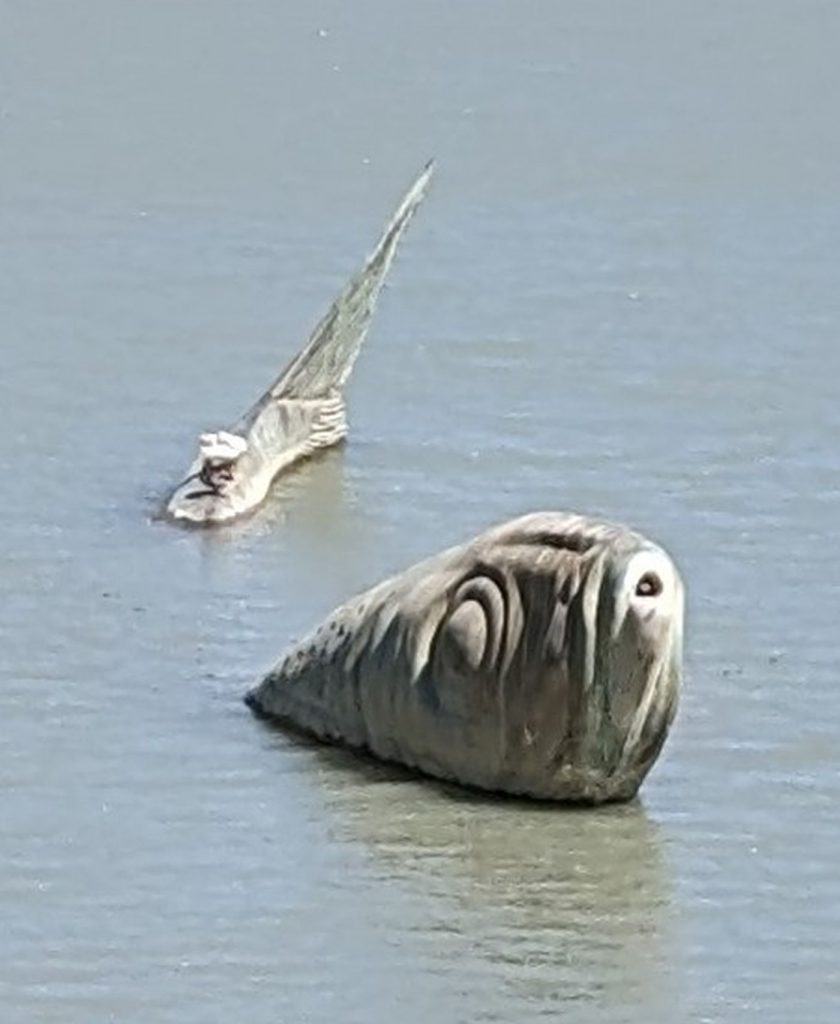
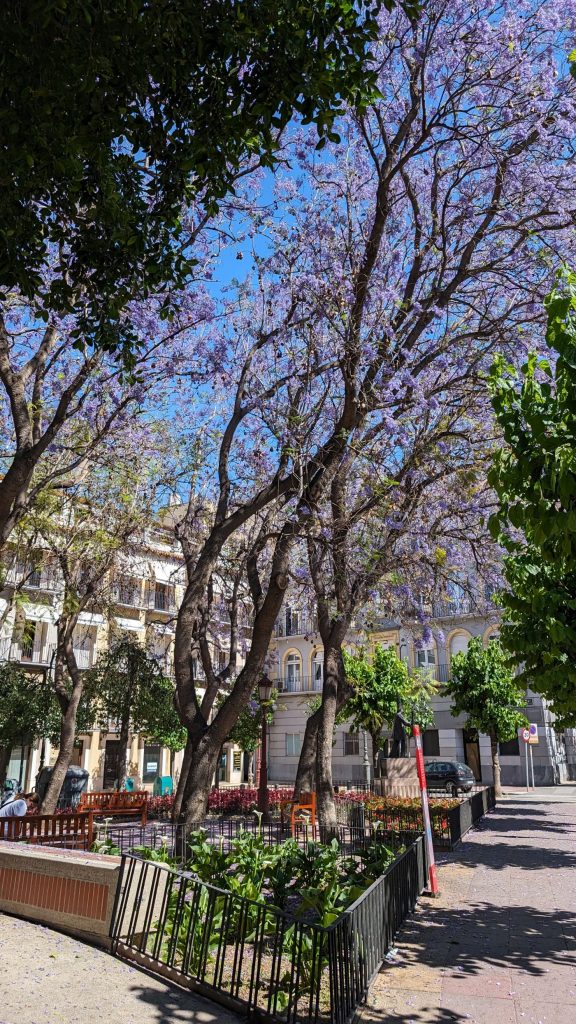
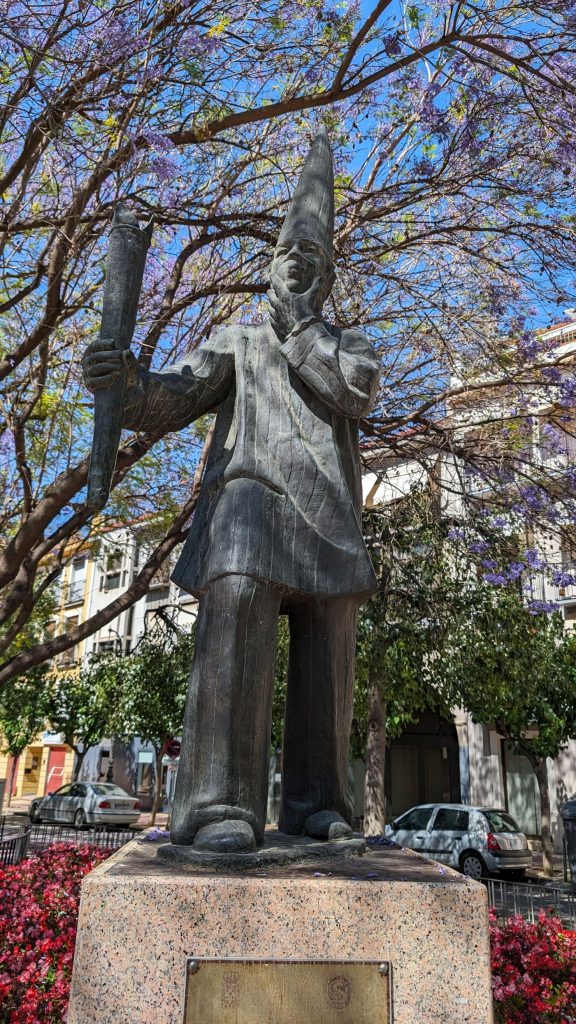
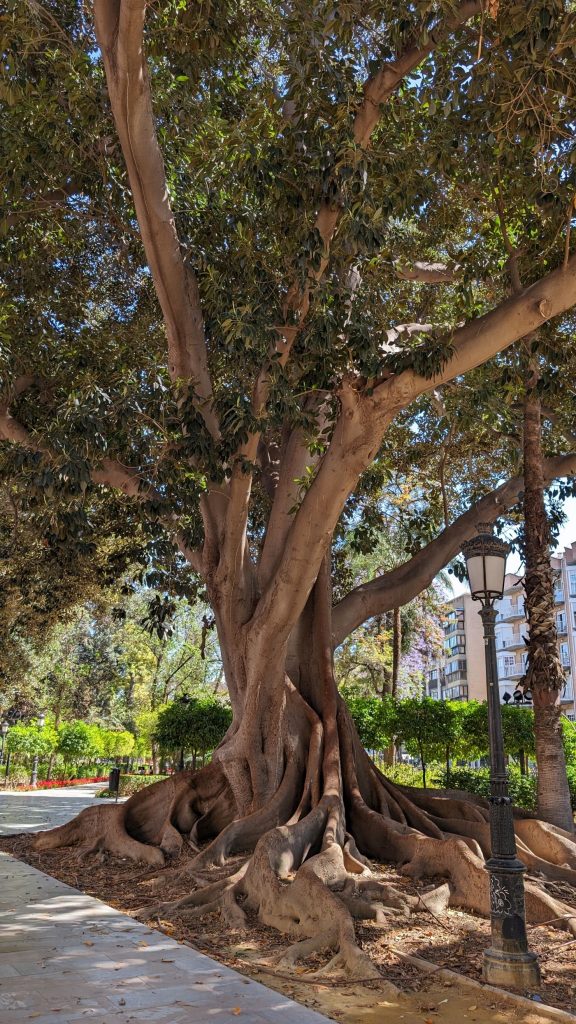
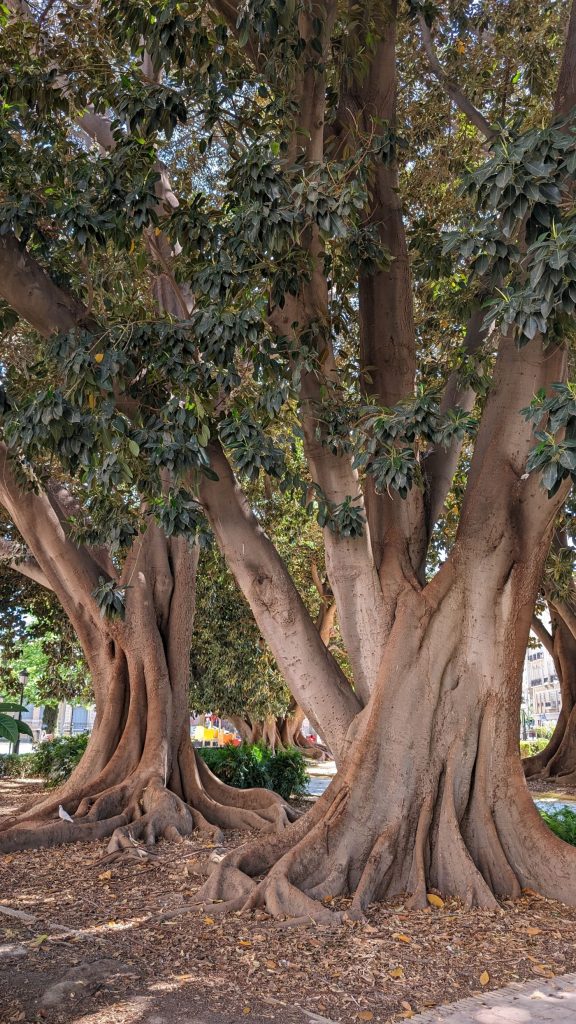
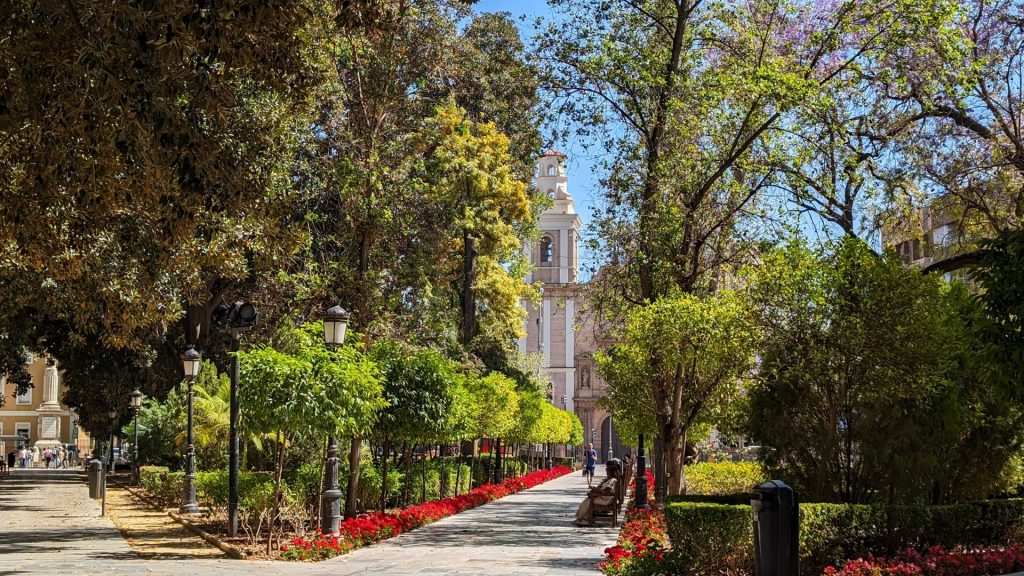
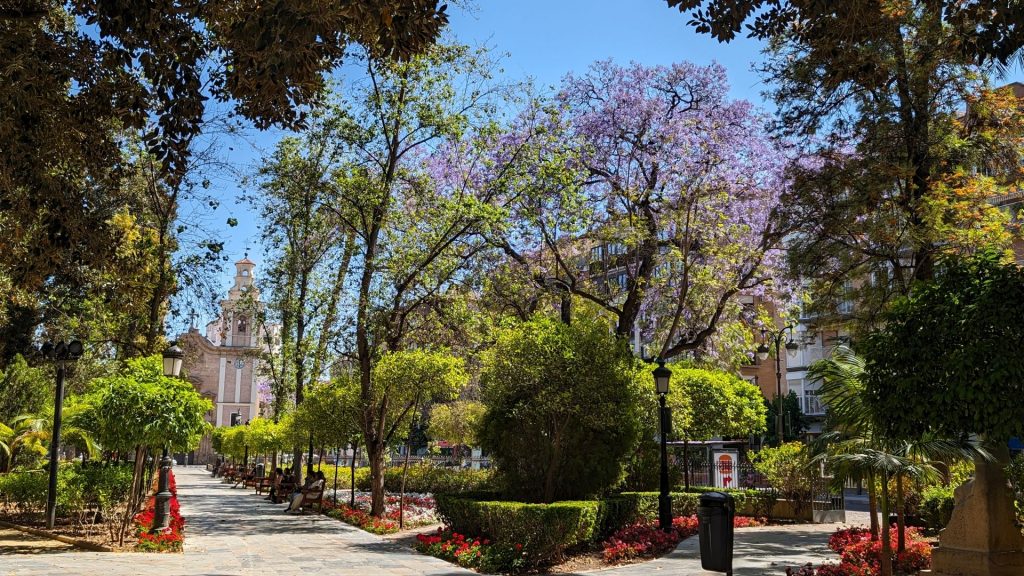
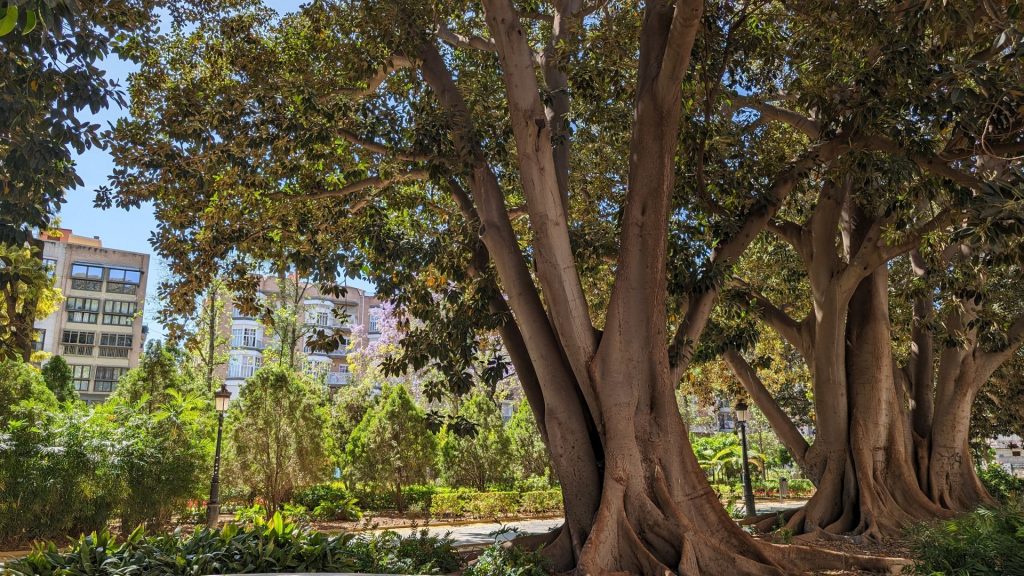
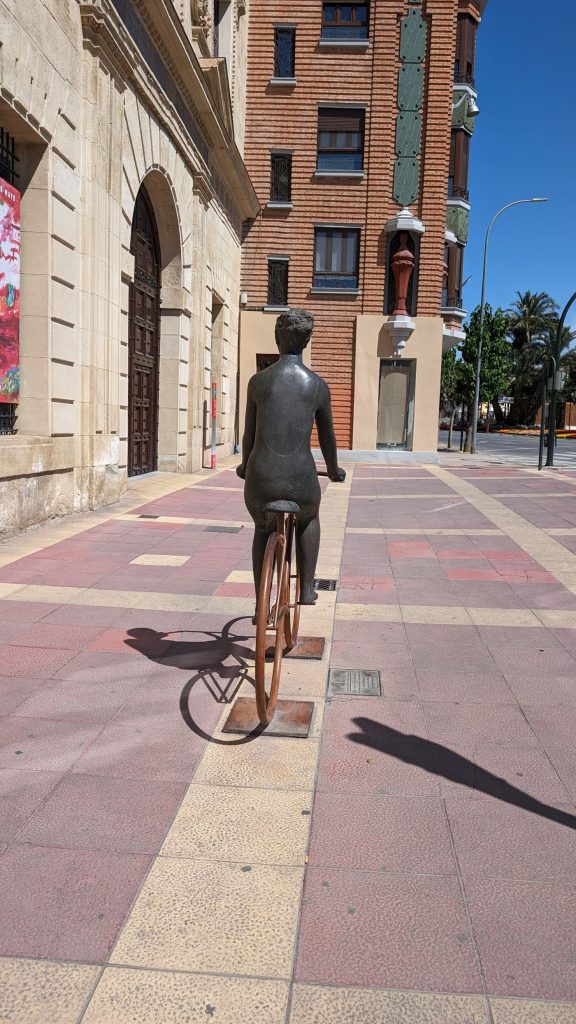
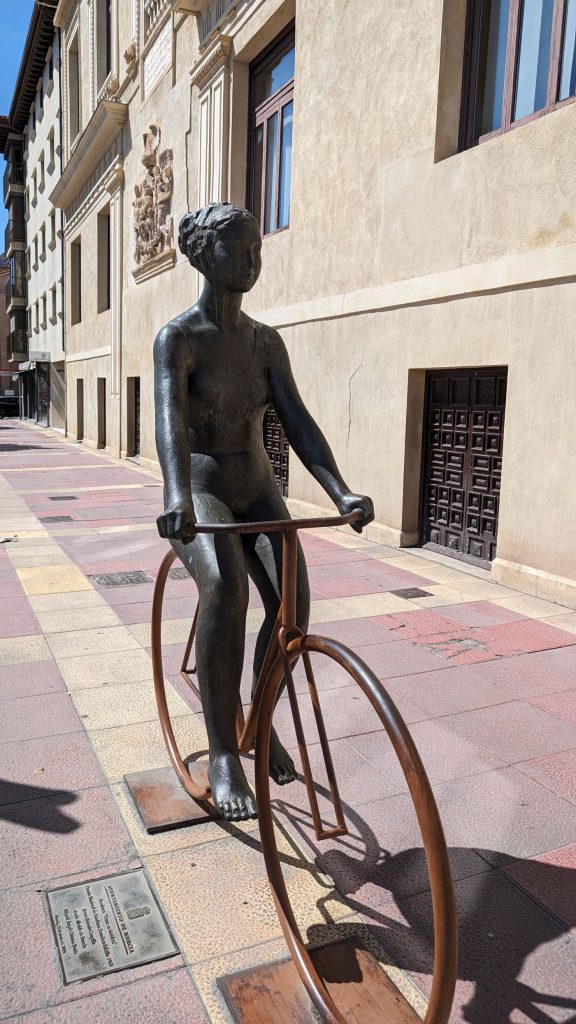
The Bridge of Hazards (pictured below)
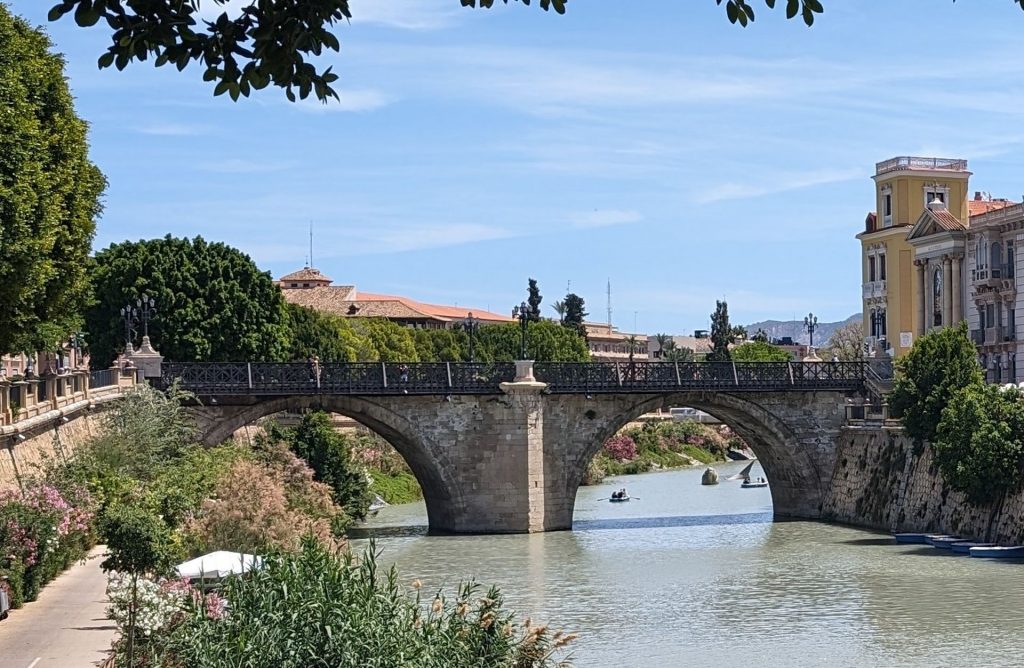
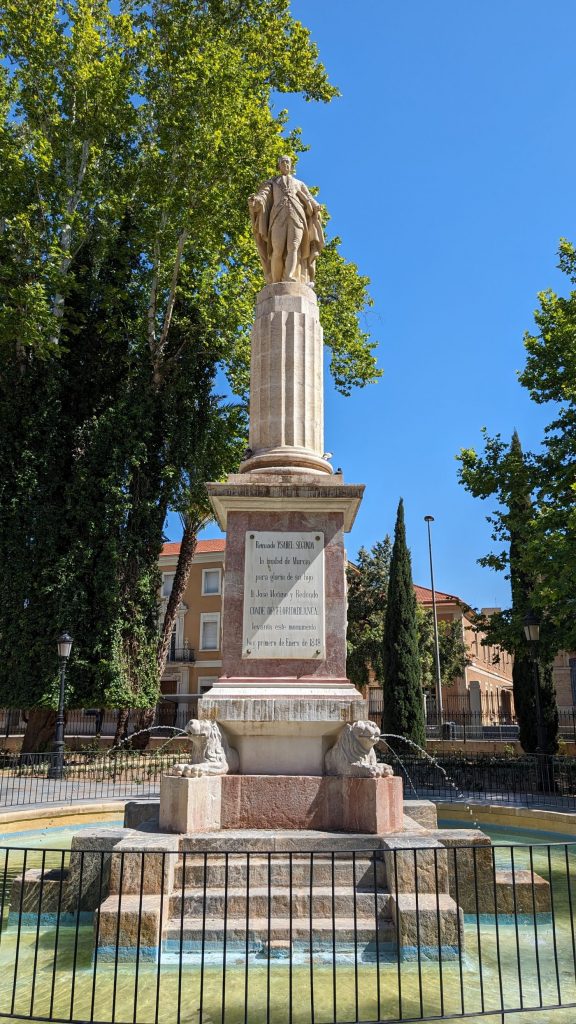
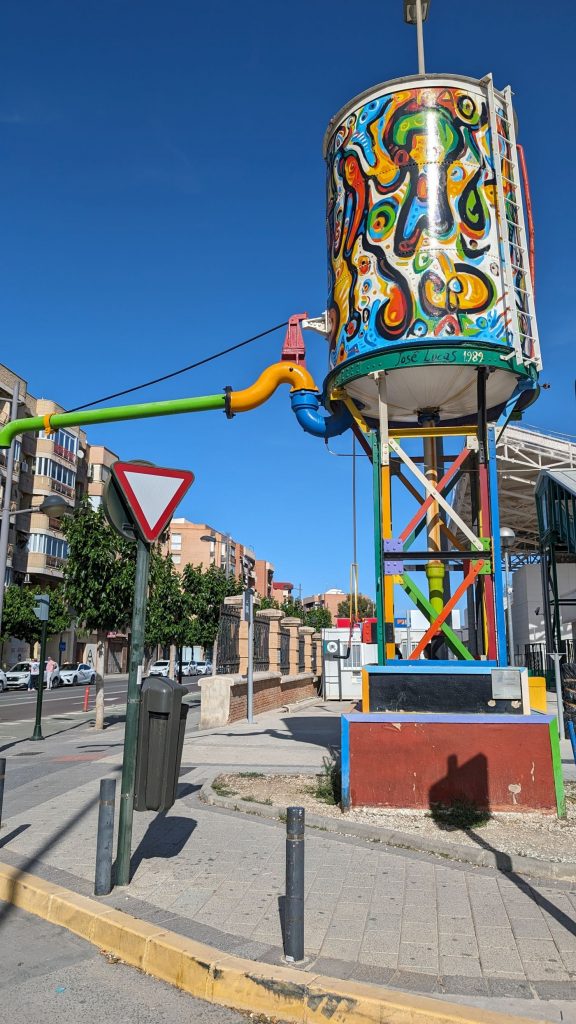
Let’s end this post with a few words about Ysabel Segunda (see statue above). The reign of Isabella II has been seen as being essential to the modern history of Spain. She was the elder daughter of King Ferdinand VII and Queen Maria Christina. Isabella’s reign spanned the death of Ferdinand VII in 1833 (but she was only three so her mother took over, which caused The First Carlist War, a fight between two factions over the succession to the throne – I won’t go into detail) until the Spanish Glorious Revolution of 1868, which forced the Queen into exile and established a liberal state in Spain.
Isabella II didn’t actually begin her reign until 1843 at the ripe old age of 13.
From Britannica:
“The period of Isabella’s personal rule (1843–68) was characterized by political unrest and a series of uprisings. Her government was dominated by military politicians, most notably Gen. Ramón María Narváez and the somewhat more liberal Gen. Leopoldo O’Donnell. Liberal opposition to the regime’s authoritarianism became increasingly directed at the queen. Scandalous reports on the private conduct of Isabella,* who lived apart from her husband, Francisco de Asís de Borbón, as well as her arbitrary political interference, further damaged the monarchical cause. The abortive uprising of 1866, and the deaths of O’Donnell (1867) and Narváez (1868), weakened her position further. In the autumn of 1868 a successful revolution drove her into exile.
Isabella settled in Paris, where in 1870 she abdicated in favour of her eldest surviving son, the future Alfonso XII (1874–85). She returned to Spain for a time after Alfonso’s accession but was unsuccessful in influencing political affairs.”
One other super important fact: Isabelle looked a lot like her mother.
*Isabella was unhappily married. She got around. Persistent rumor had it that few if any of Isabella’s children were fathered by her husband, rumored to be a homosexual.
That’s today’s post! I would happily visit Murcia again!
